Sleek cases, smarter cooling and serious DIY spirit: Corsair's Computex 2025 highlights
From touchscreen side panels to modular cases, it was all about flexibility and flair
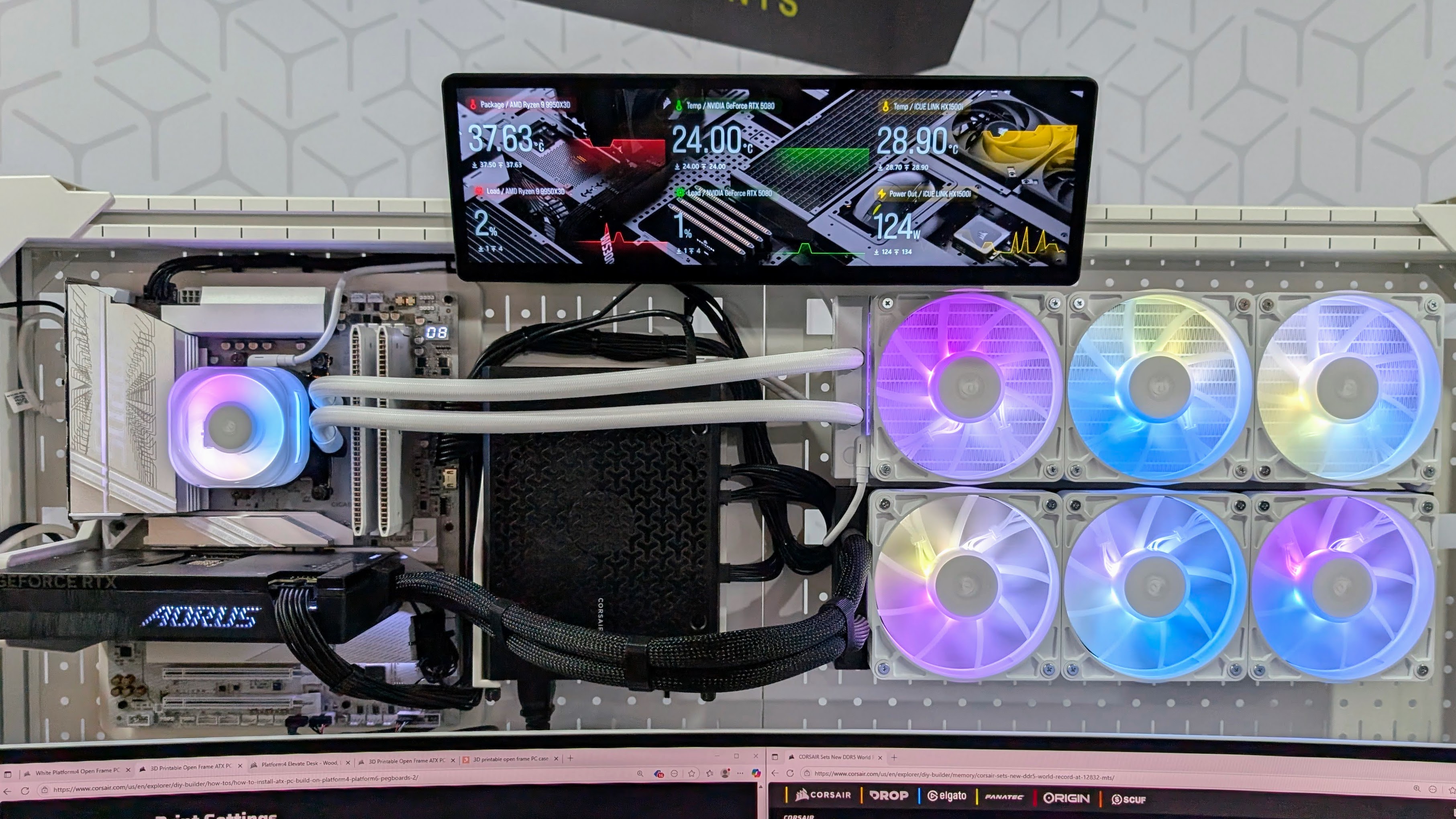
Missed any of the action from Computex 2025? We're diving back into our photos and rounding up the standout launches from our favourite brands.
This year Corsair went for a more personal showcase off the main show floor, demoing a mix of sleek hardware, upgraded cooling and DIY-focused gear. This gave us the chance to take a more intimate look at everything on display, but we were lucky to get in early as the space filled up quickly and was packed by the time we left.
PC cases just the way you always wanted
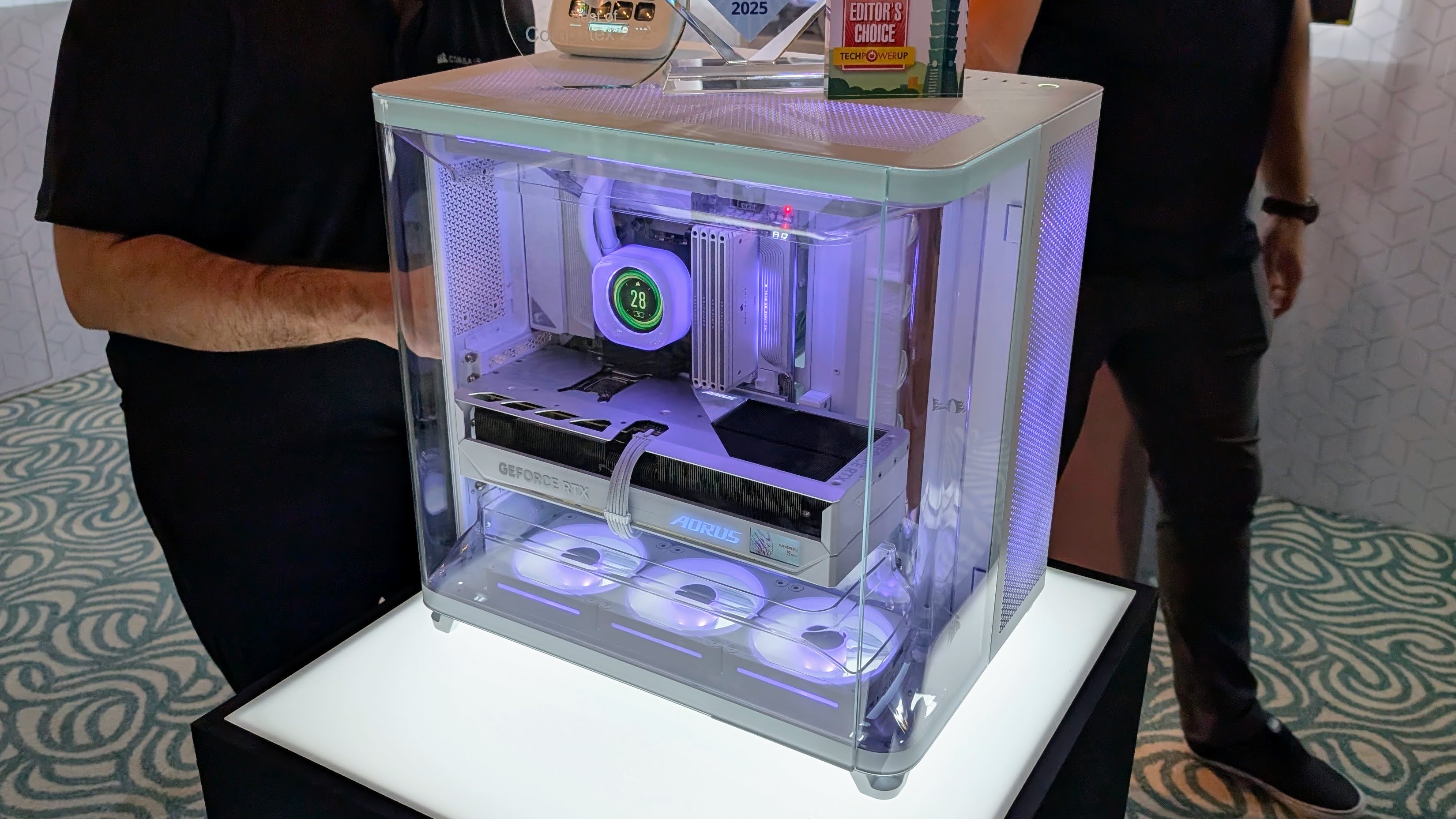
Corsair’s new case lineup kept us entertained for most of the morning, and we flitted between the options, pulling them apart and getting to know the designs.
The Air 5400 plays with airflow by splitting the case into three chambers – one each for the CPU, GPU, and PSU. It’s a clever layout that aims to keep thermals under control without resorting to brute-force cooling, and the compartmentalised design makes for cleaner cable management too.
Then there’s the Frame 5000D, which supports reverse-connection motherboards and uses Corsair’s Frame Modular Case System. That means you can shift fan brackets, motherboard trays and other internals around to suit your build – kind of like Meccano for grownups, only with tempered glass and RGB.
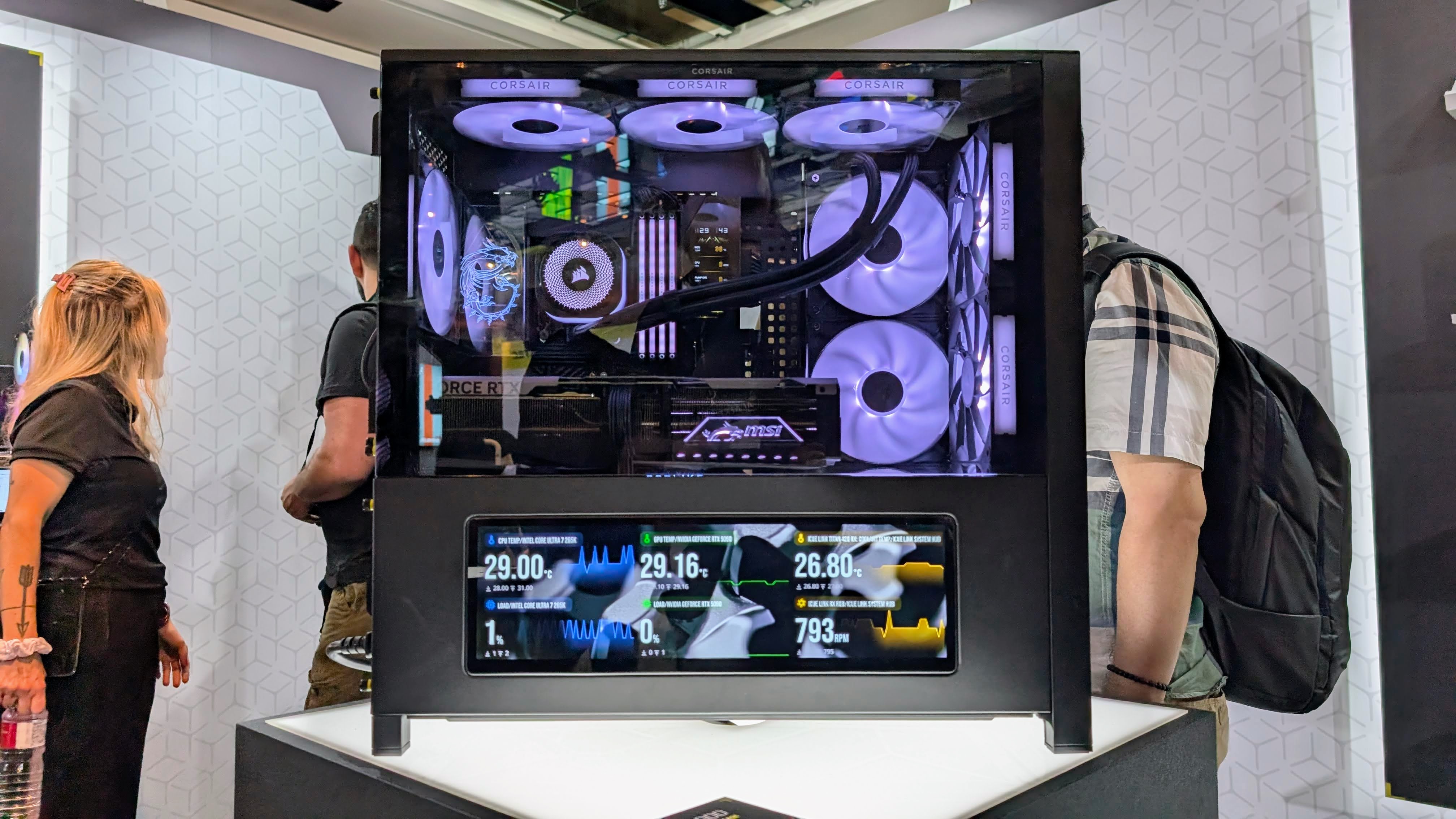
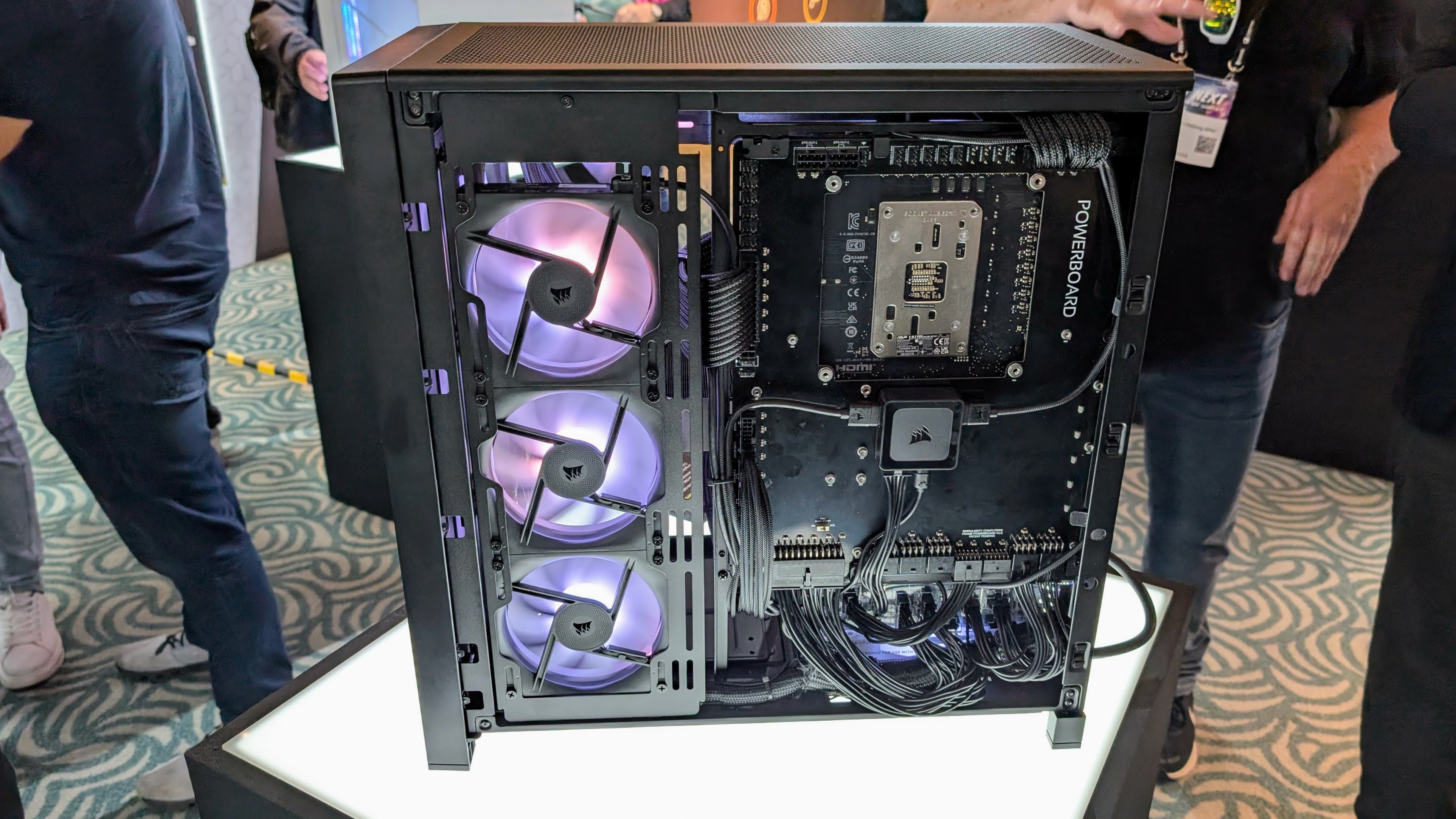
Even cooler: Corsair showed off the Xeneon Edge, a 14.5-inch touchscreen LCD panel designed to mount seamlessly onto the Frame 5000D. It acts as a secondary display for system stats, media controls, or overlays, and connects via iCUE for full customisation.
We only got to play with it for a short time, but the added touchscreen interface (something not found on most other similar screens) makes it very versatile – whether you want real-time temps, a Spotify controller, or just something flashy to show off your build. In other words, a nerdy and elegant way to get the benefit of an extra screen without eating up precious desk space.
Sign up for breaking news, reviews, opinion, top tech deals, and more.


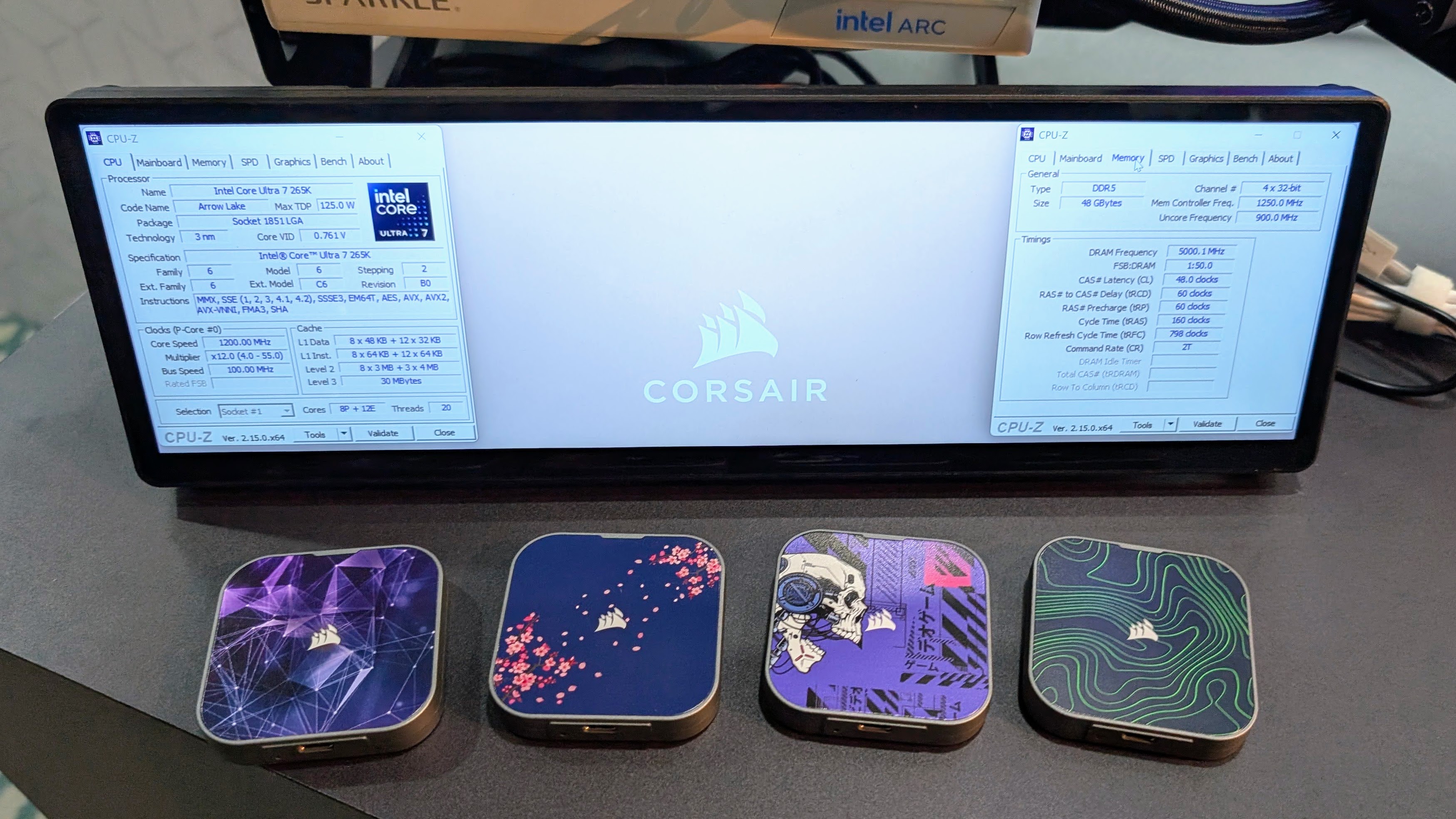
But our favourite Corsair case this year? It was without a doubt the Frame 4500X. It’s a curved-glass, dual-360-radiator, fully modular monster of a case. Everything from PSU shrouds to fan mounts is swappable or removable, which gives you solid control over airflow, layout, and overall aesthetics.
It’s going to appeal to serious builders who want flexibility and hate to compromise. We also think the curved front glass gives it a striking presence that sets it apart from most other glass panelled cases.
Corsair also had a range of other concept cases on display, including a very cool open-air frame case we hope they end up releasing.

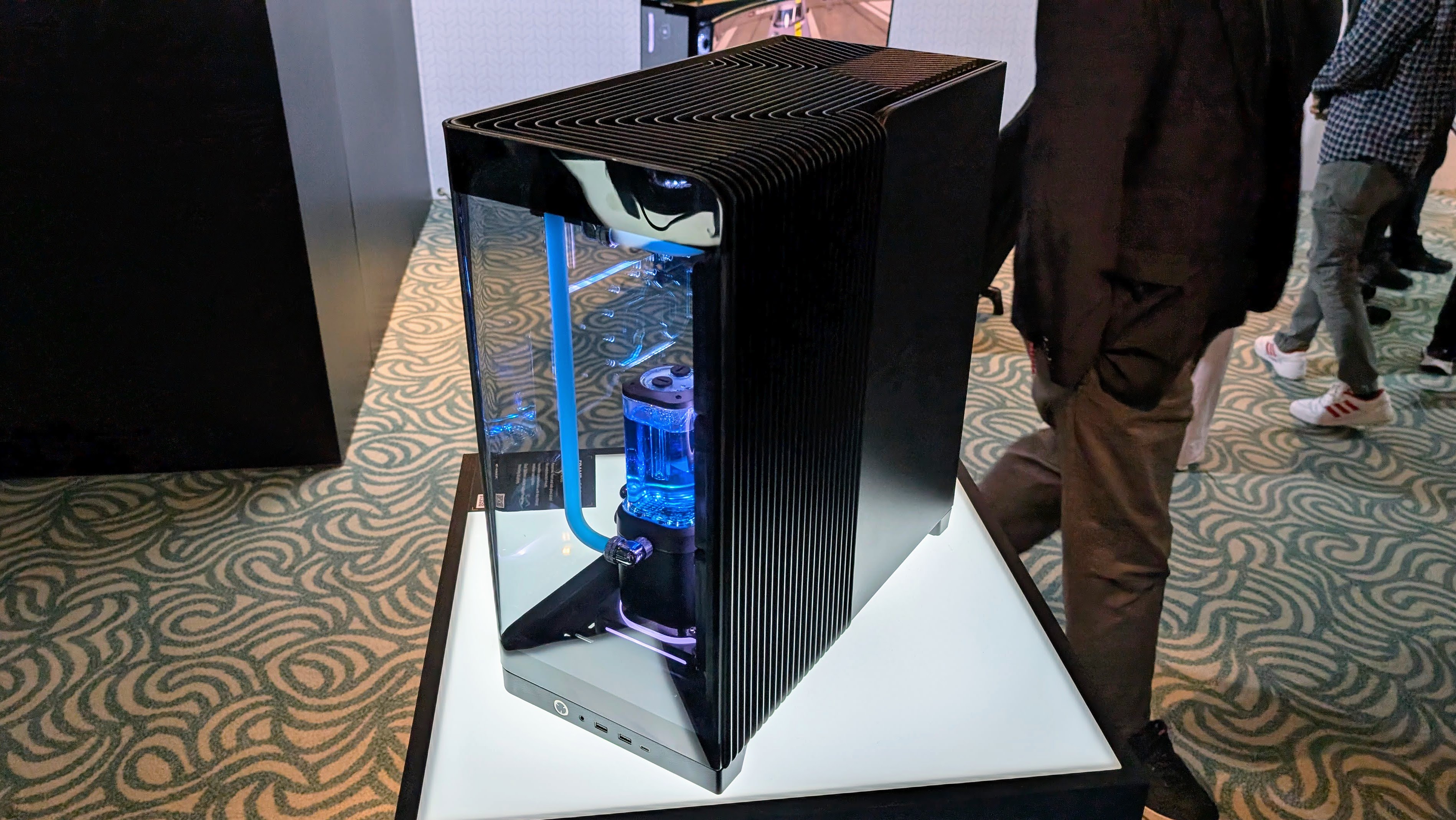


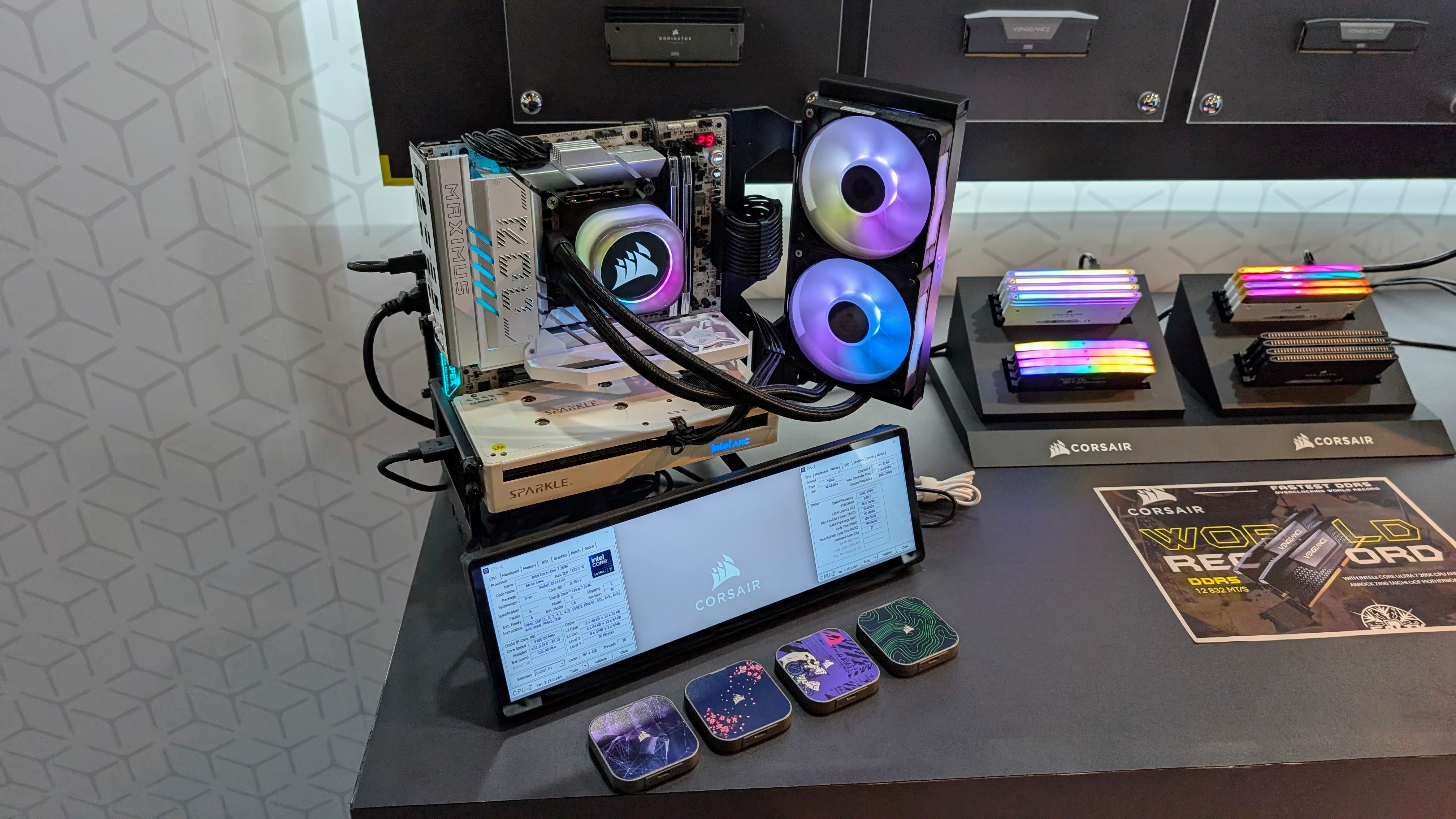

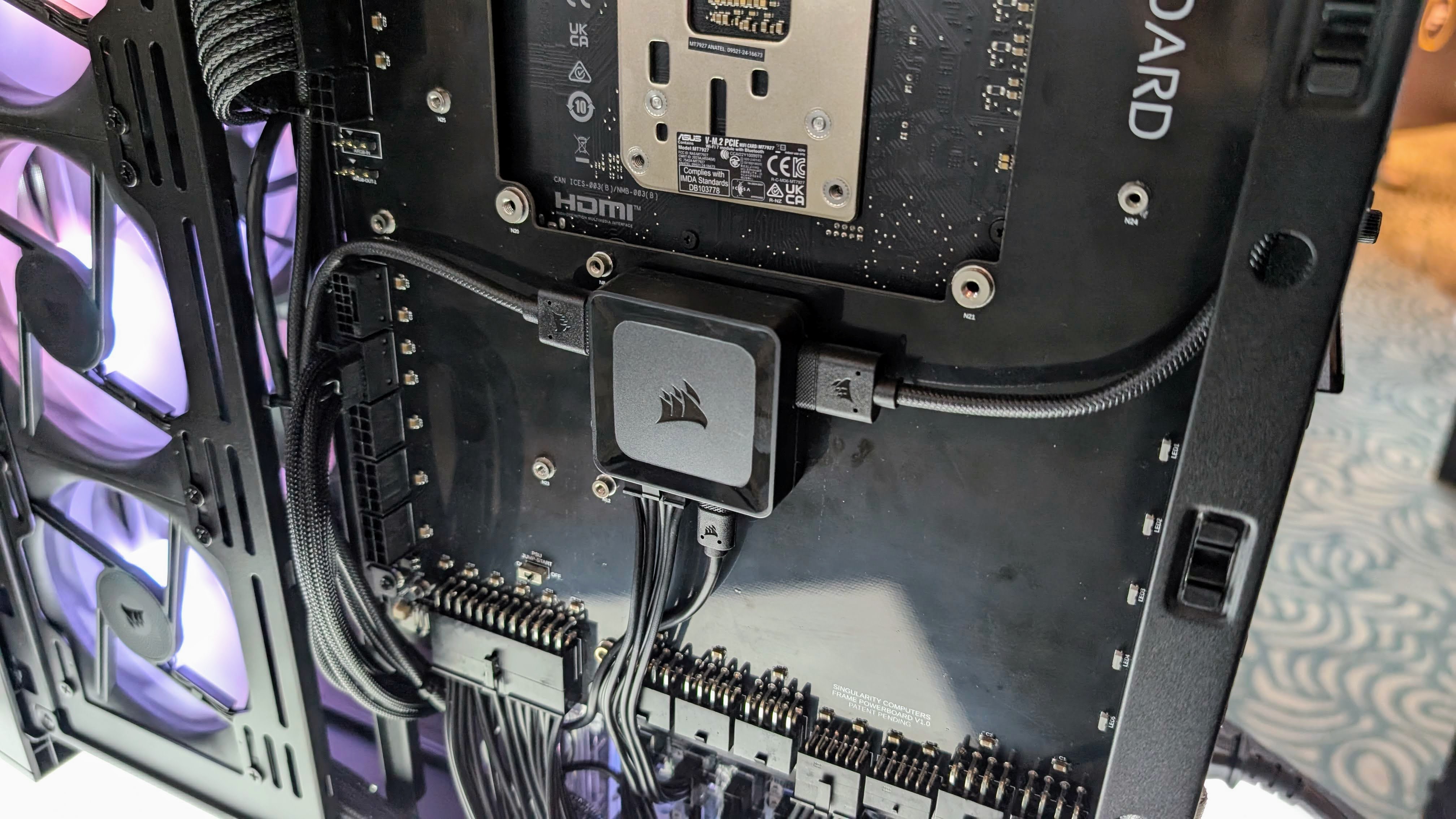
Corsair’s desk game is strong
After escaping the thrall of the cases, we were immediately entranced by the latest version of the Platform:6 motorised standing desk. Corsair says it's designed for streamers, creators, and power users, but really it’s for anyone who wants a super cool desk. It brought out our DIY cravings more than usual thanks to a wide range of modular add-ons including monitor arms, shelves, pegboards and more.
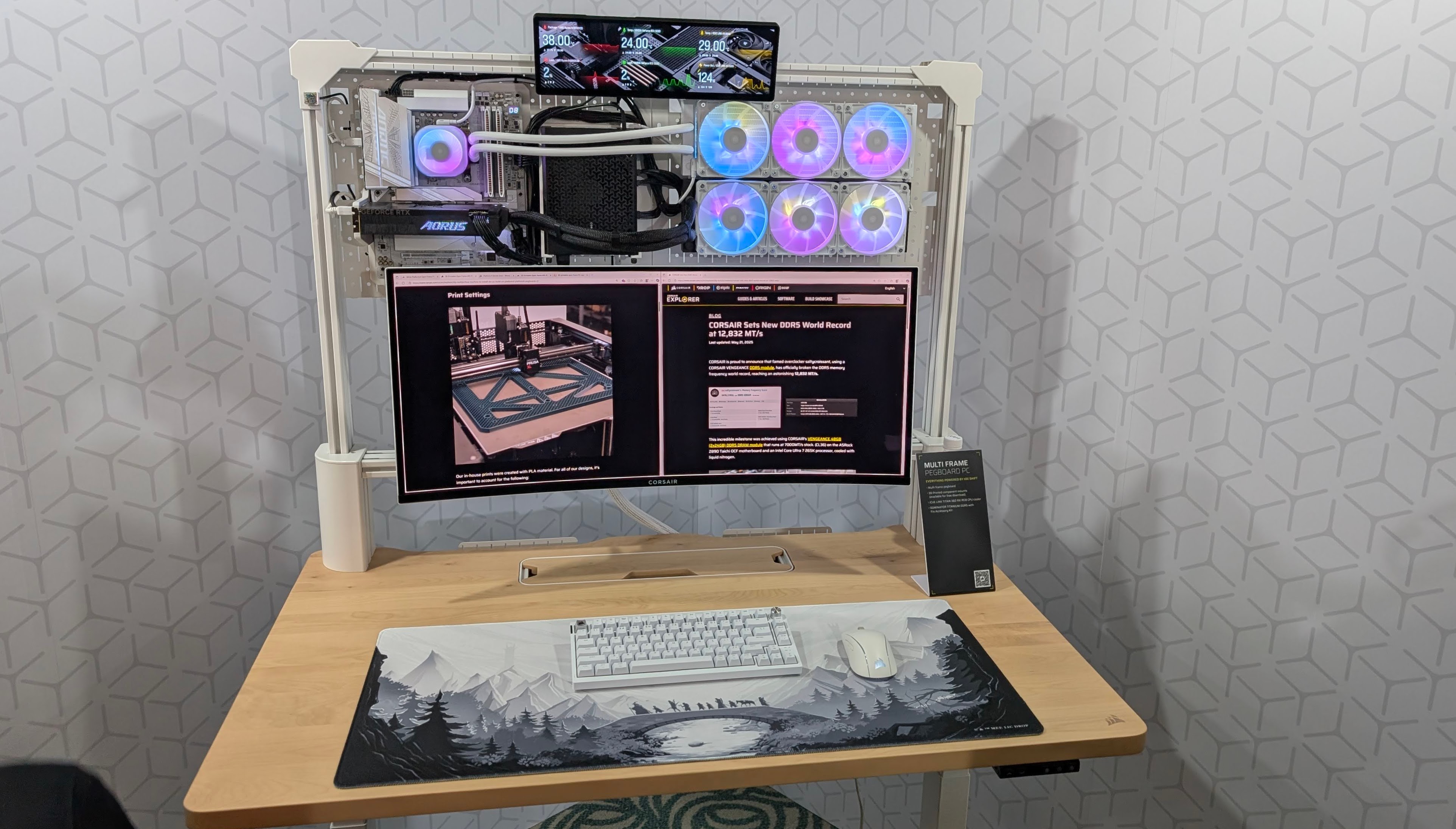
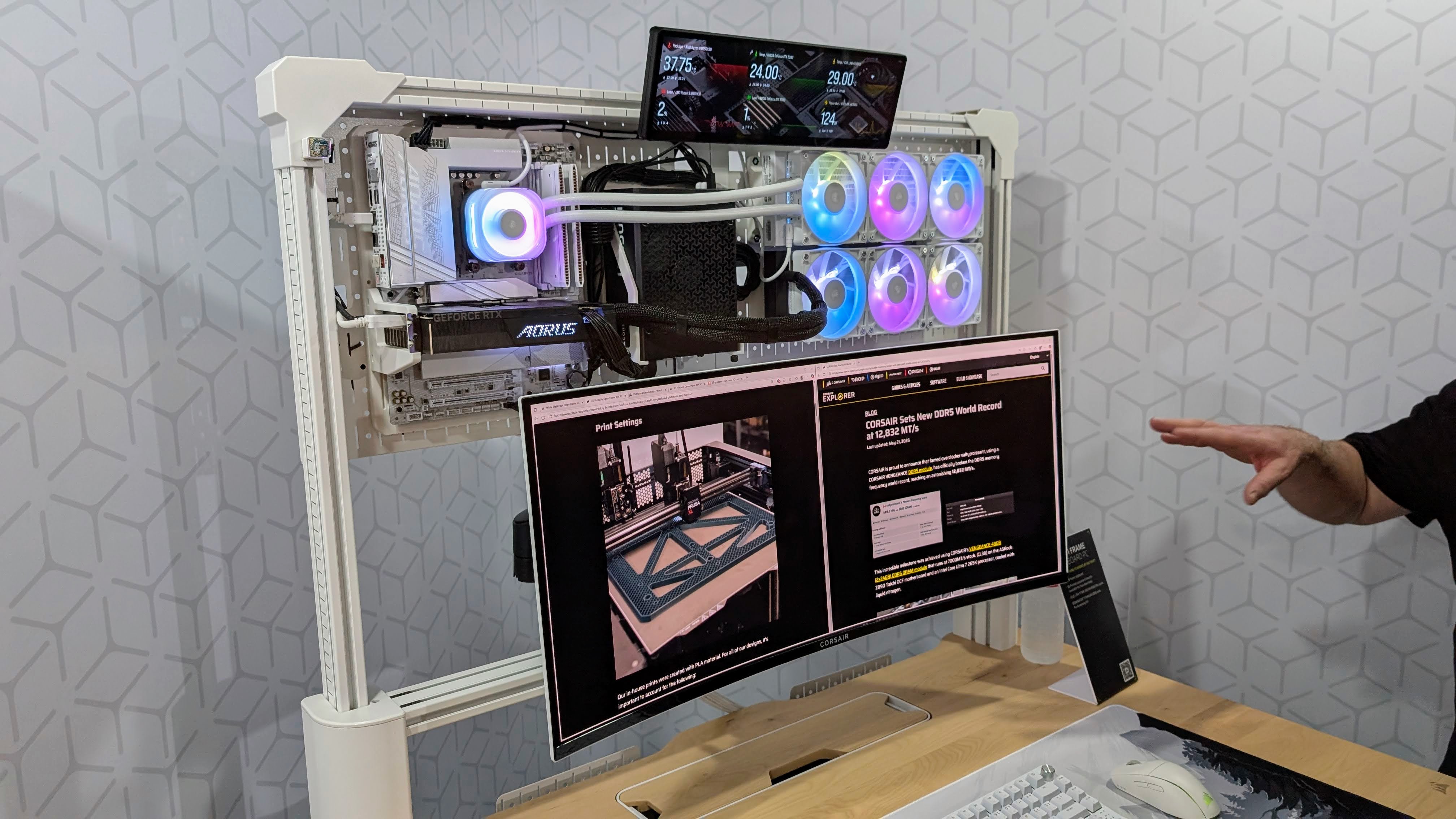

There’s a real sense of flexibility here, whether you're building a gaming station or a multitasking workbench. We also saw that Corsair has based the latest upgrades to the desk on loads of real world use – from cable routing to accessory mounting – in a way that made it feel more like a fully user created setup, rather than an actual production model standing desk.
Also earning our praise: Corsair continues to lean into maker culture with designs for official 3D-printable accessories. Stuff like cup holders, headset stands, cable management and mounting brackets, or all sorts of options the community shares. It’s a small thing, but it shows they know who their users are.
AIO cooling with looks and performance
Corsair showed off the Nautilus RS LCD AIO – a sleek liquid cooler with a customisable display right on the pump block. And to be fair, we don’t hate this focus on performance cooling that also enhances your build’s aesthetic, but have yet to get solid pricing to see how much extra it costs.
We were especially fond of the Nautilus due to its clean, understated look and support for iCUE integration, letting you display system stats, animations or just something cool to match your setup.
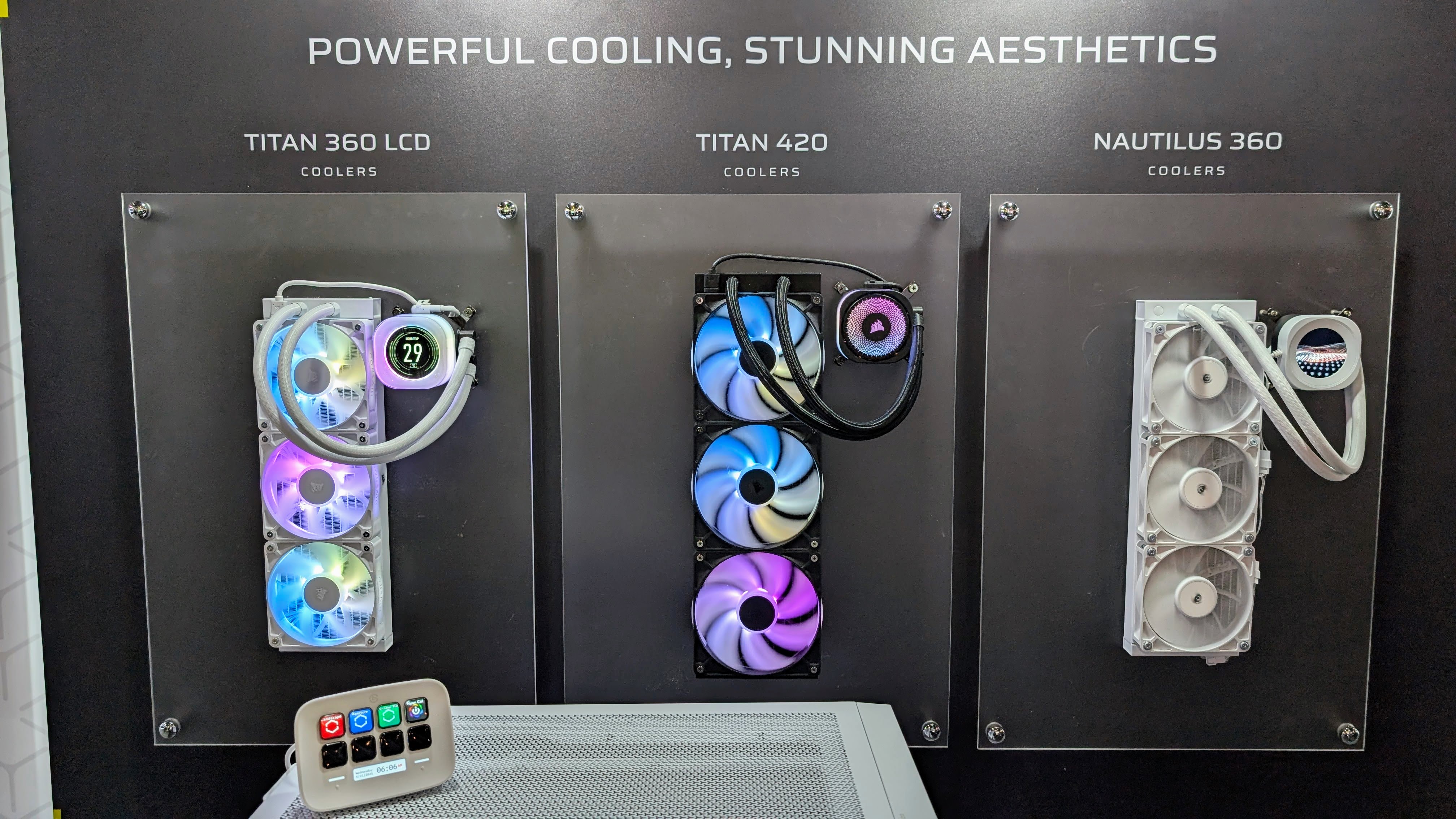

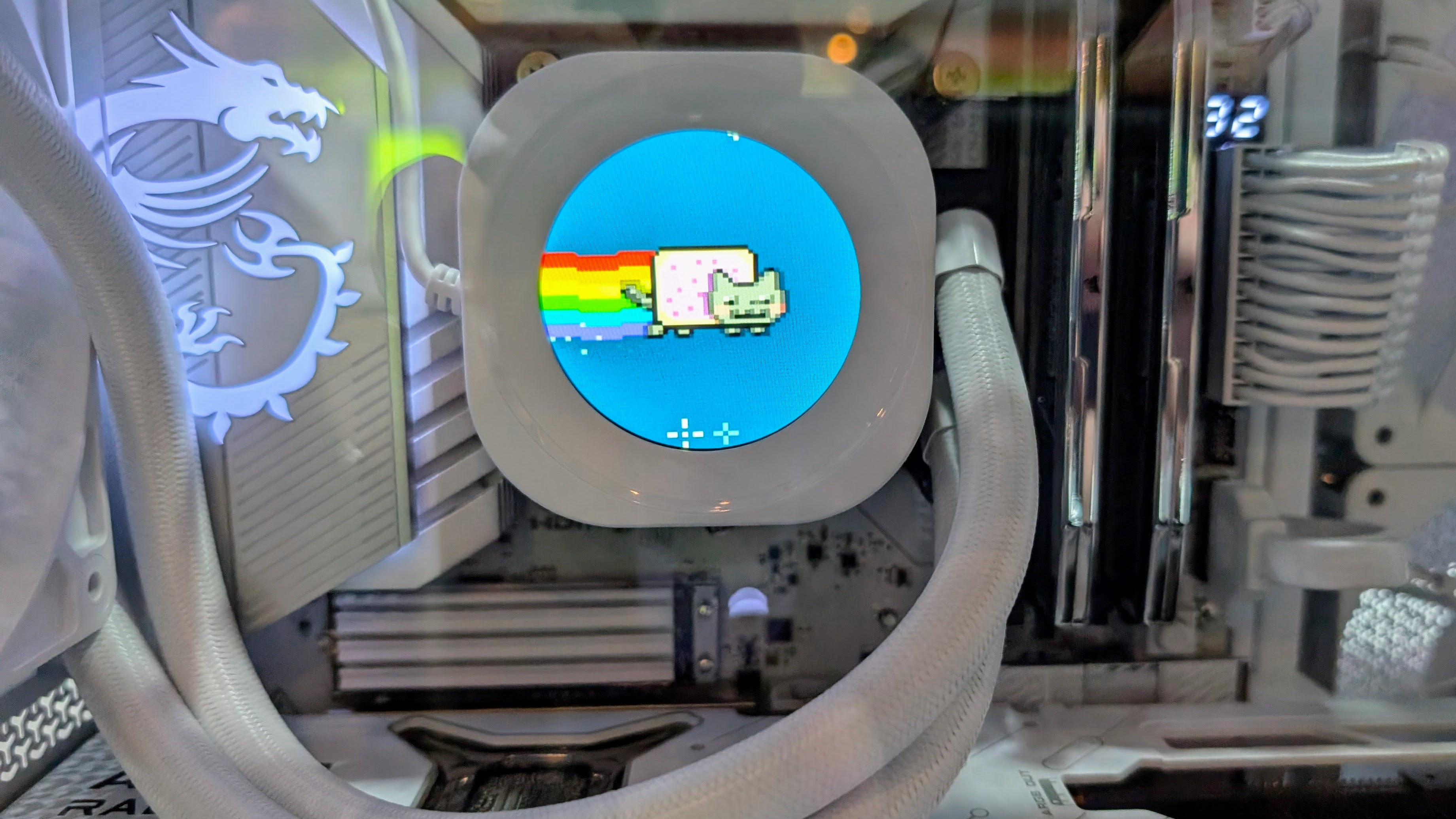
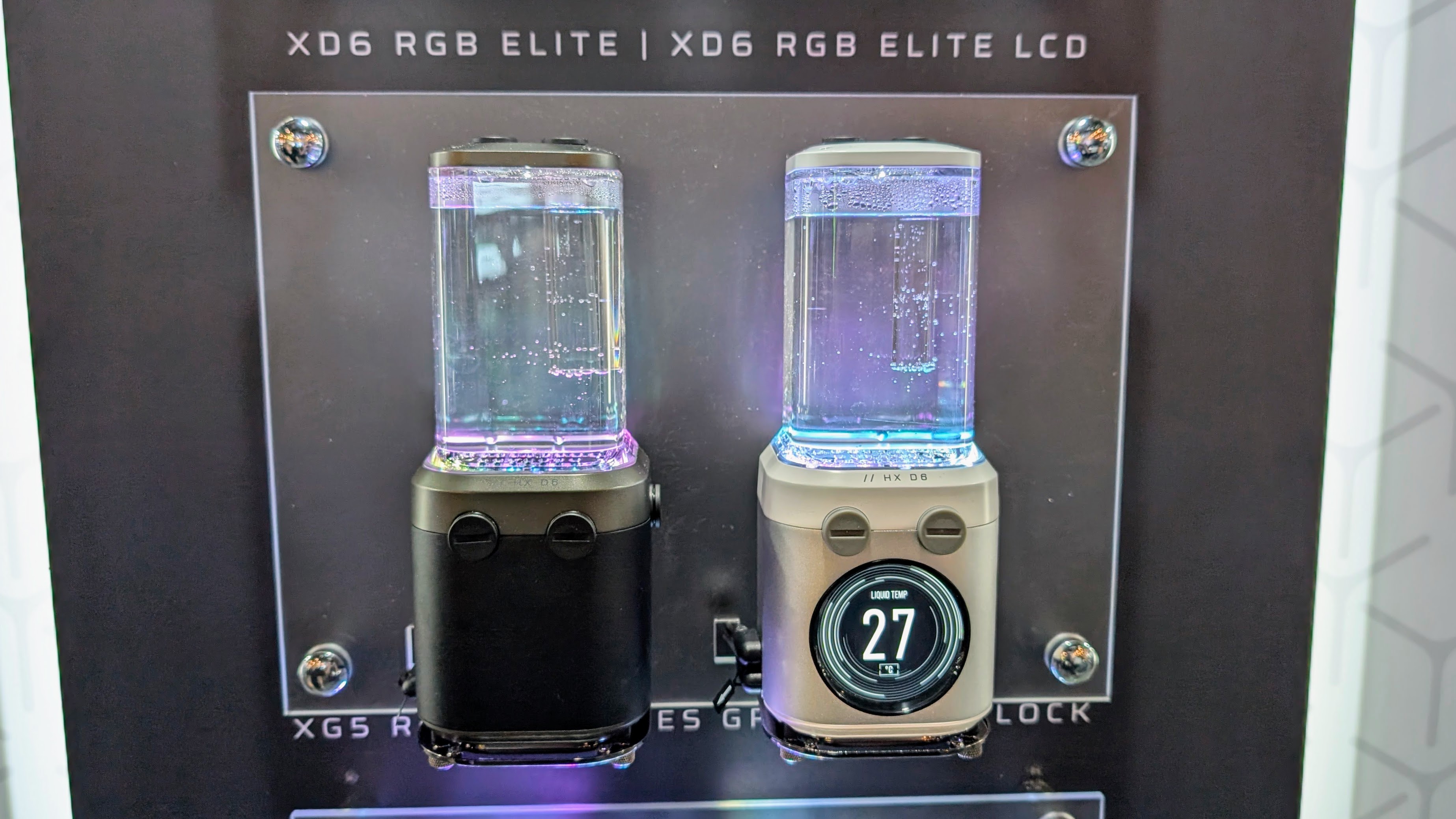
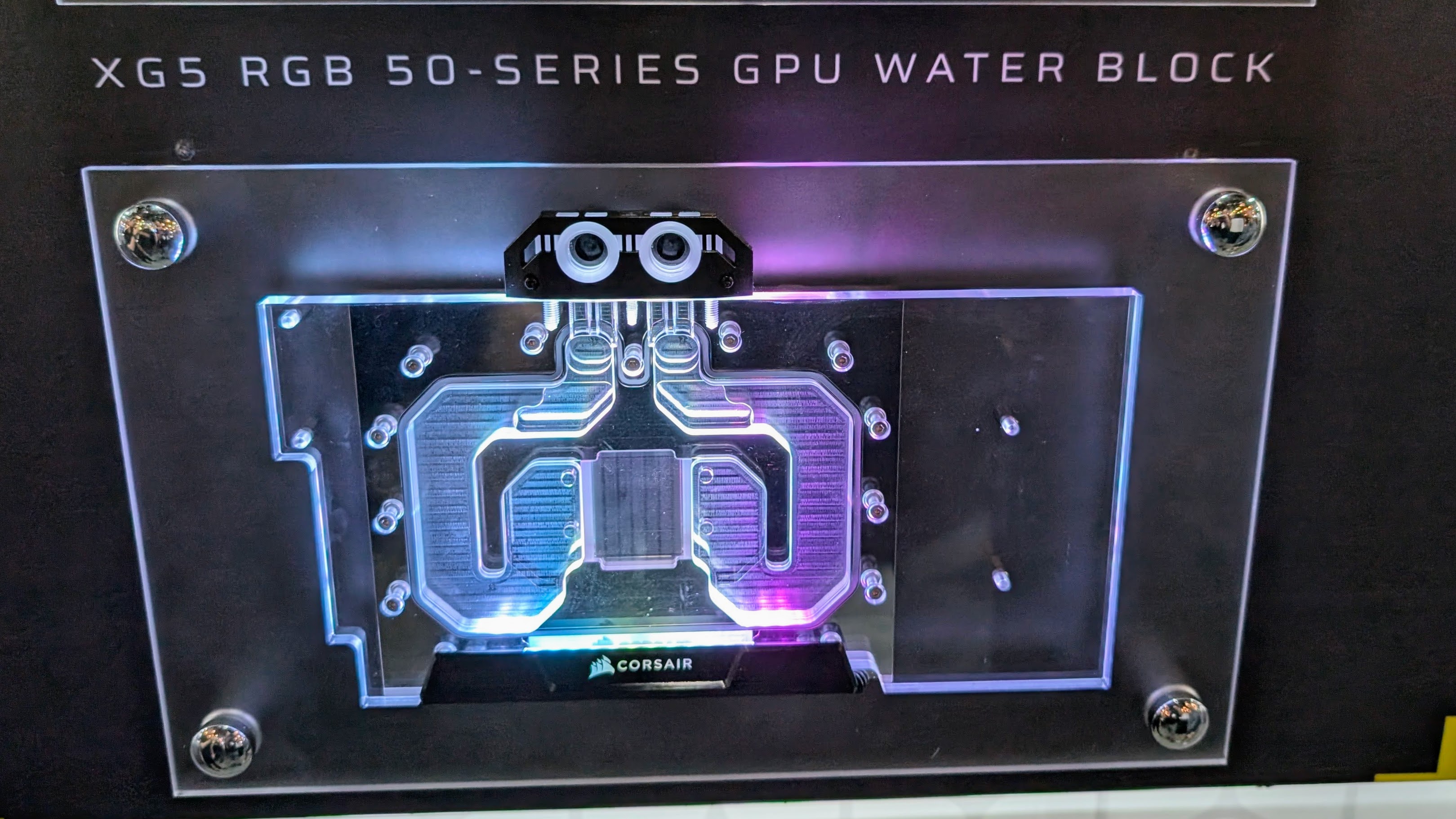
Joining it were the new Titan 350 and 420 LCD models. These have upgraded radiator designs, improved fans, and larger high-resolution pump displays. The 420 in particular looked like it meant business, packing enough cooling power for high-end builds with plenty of headroom for overclocking.
Both Titan units also support native iCUE Link, which helps keep cable clutter to a minimum and makes it easier to daisy chain them with other Corsair components.
RAM and records
Corsair got in a flex before Computex started: announcing a record-breaking 12,832 MT/s Vengeance DDR5 overclock.
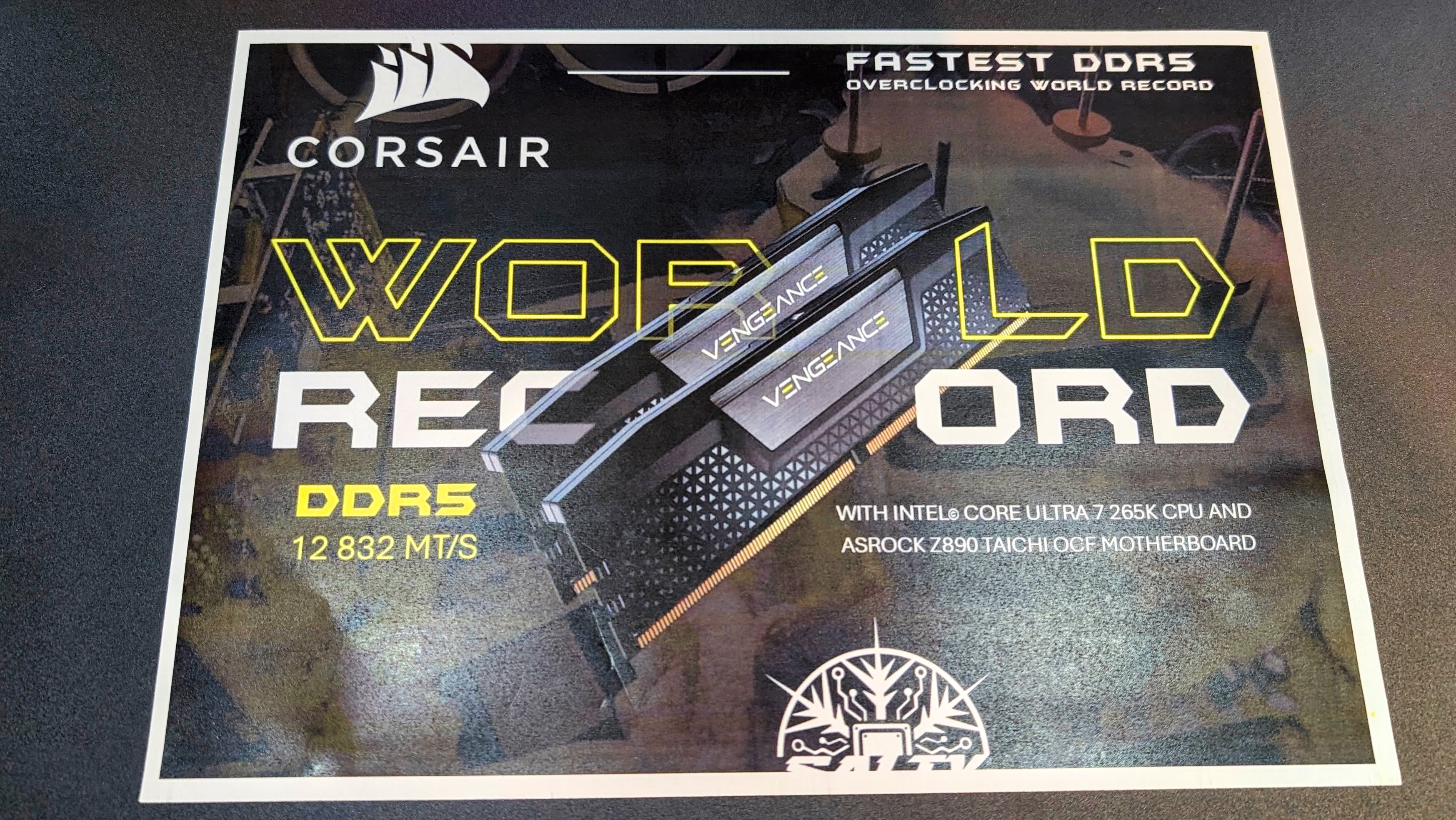
Corsair's Vengeance RGB DDR5 CUDIMM kits were on show but not the main focus. The RAM is available in capacities up to 96GB and rated at speeds up to 9,200 MT/s out of the box, and are designed to be paired with the latest Intel Core Ultra 200-series CPUs and Z890 boards. They’re also backwards compatible with existing DDR5 setups, which is great news if you’re not quite ready to overhaul your system.
Corsair also had a range of existing RAM and storage offerings on display, though these weren't launched at Computex.
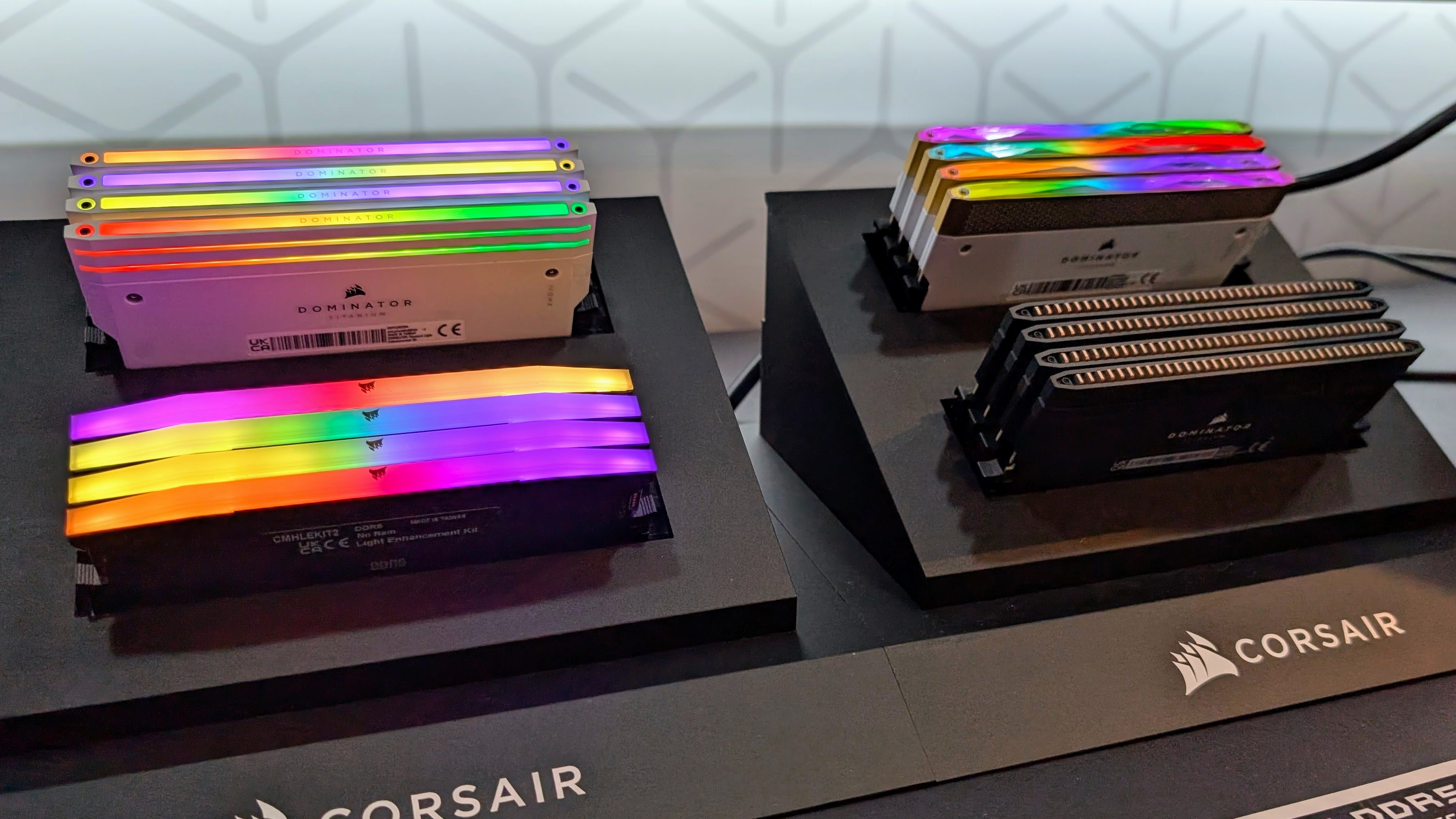
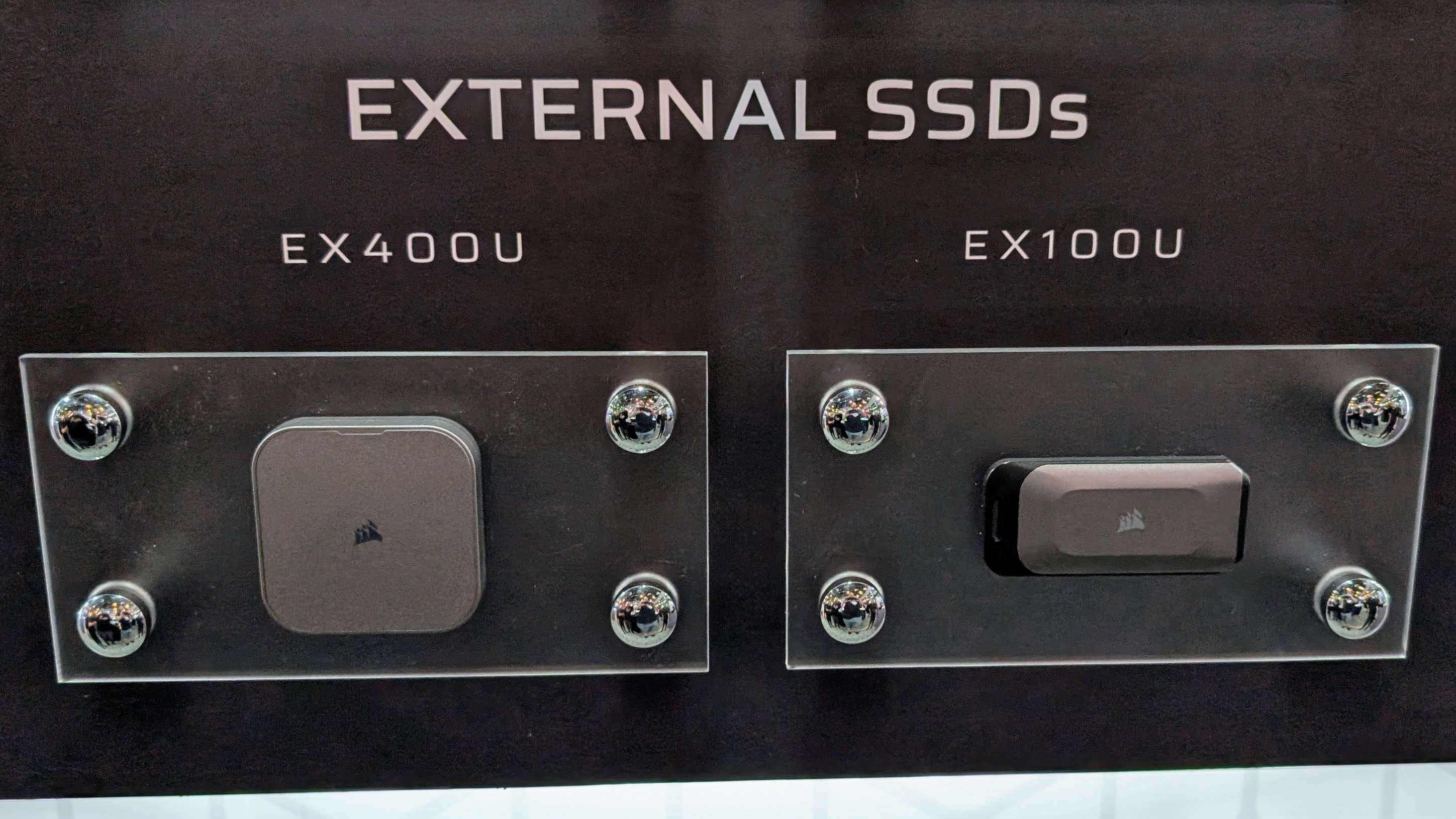
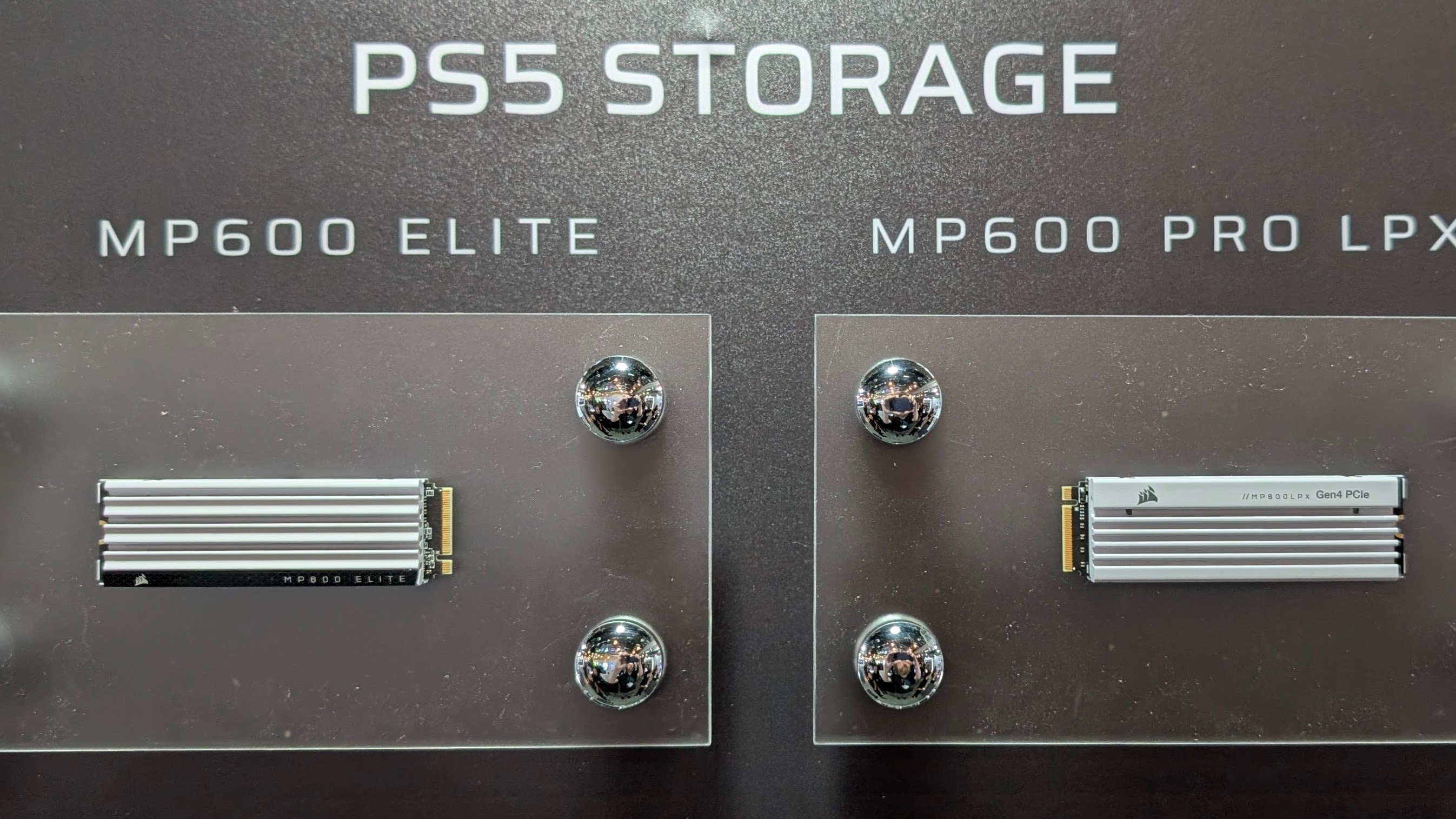
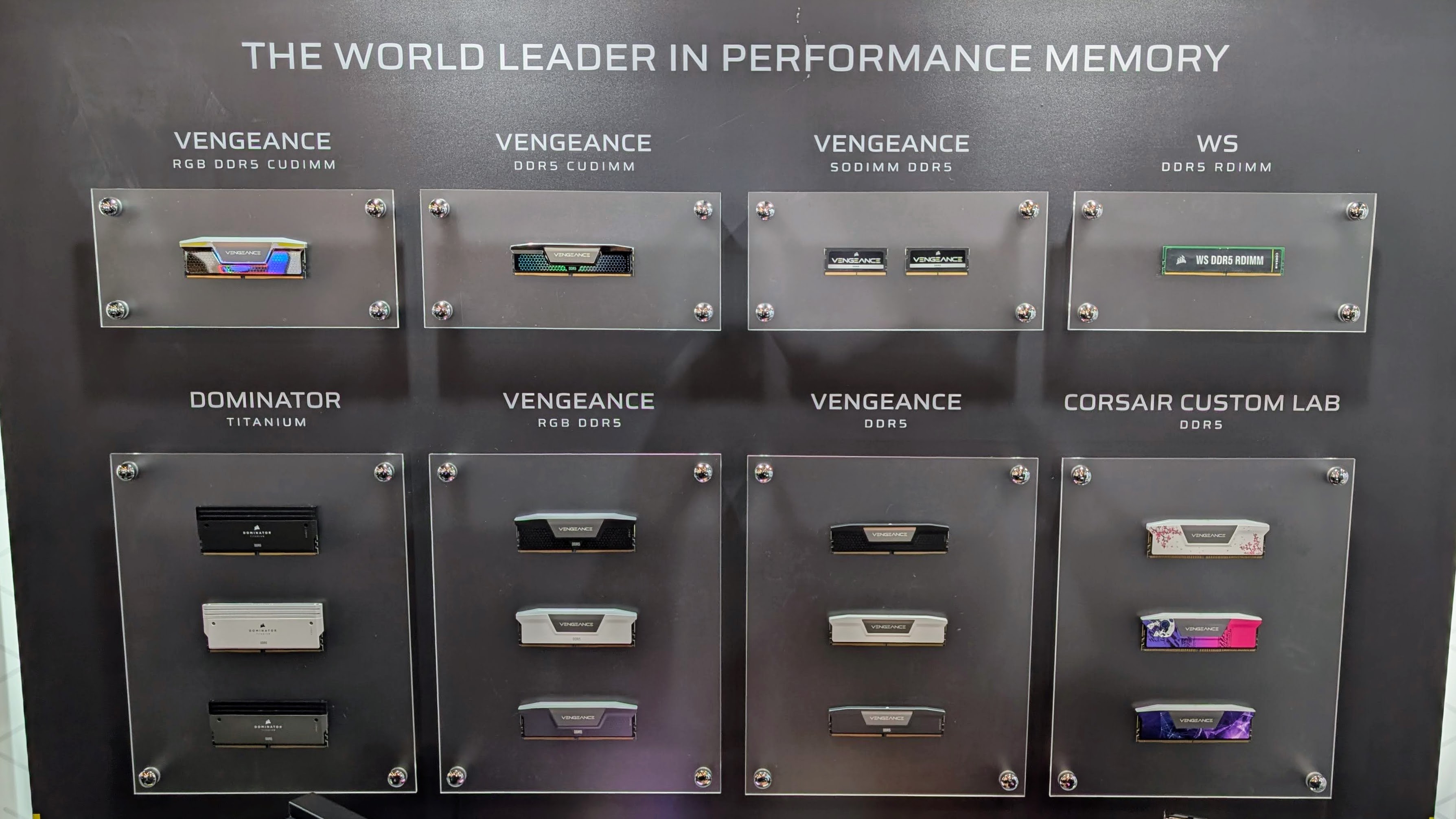
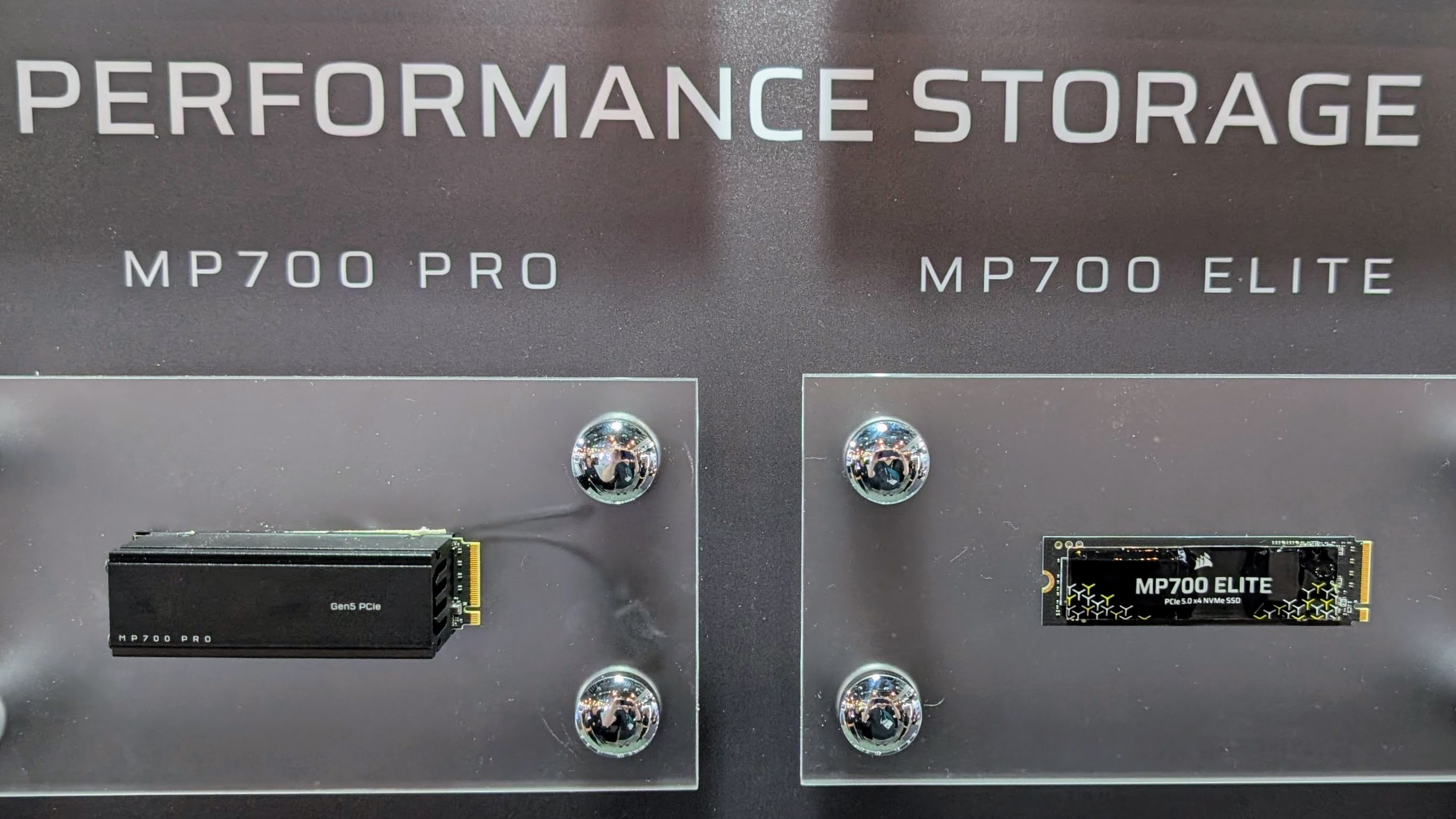
Power, but neater
Power supplies can be same old same old, but Corsair’s new HXi and RMx Shift series are actually trying to do something a bit new and different. Features like side-mounted connectors make cable routing easier, especially with reverse-connection boards and tight chassis layouts. It’s a small design shift, but one that will be much appreciated by anyone attempting an extra clean and sleek build.
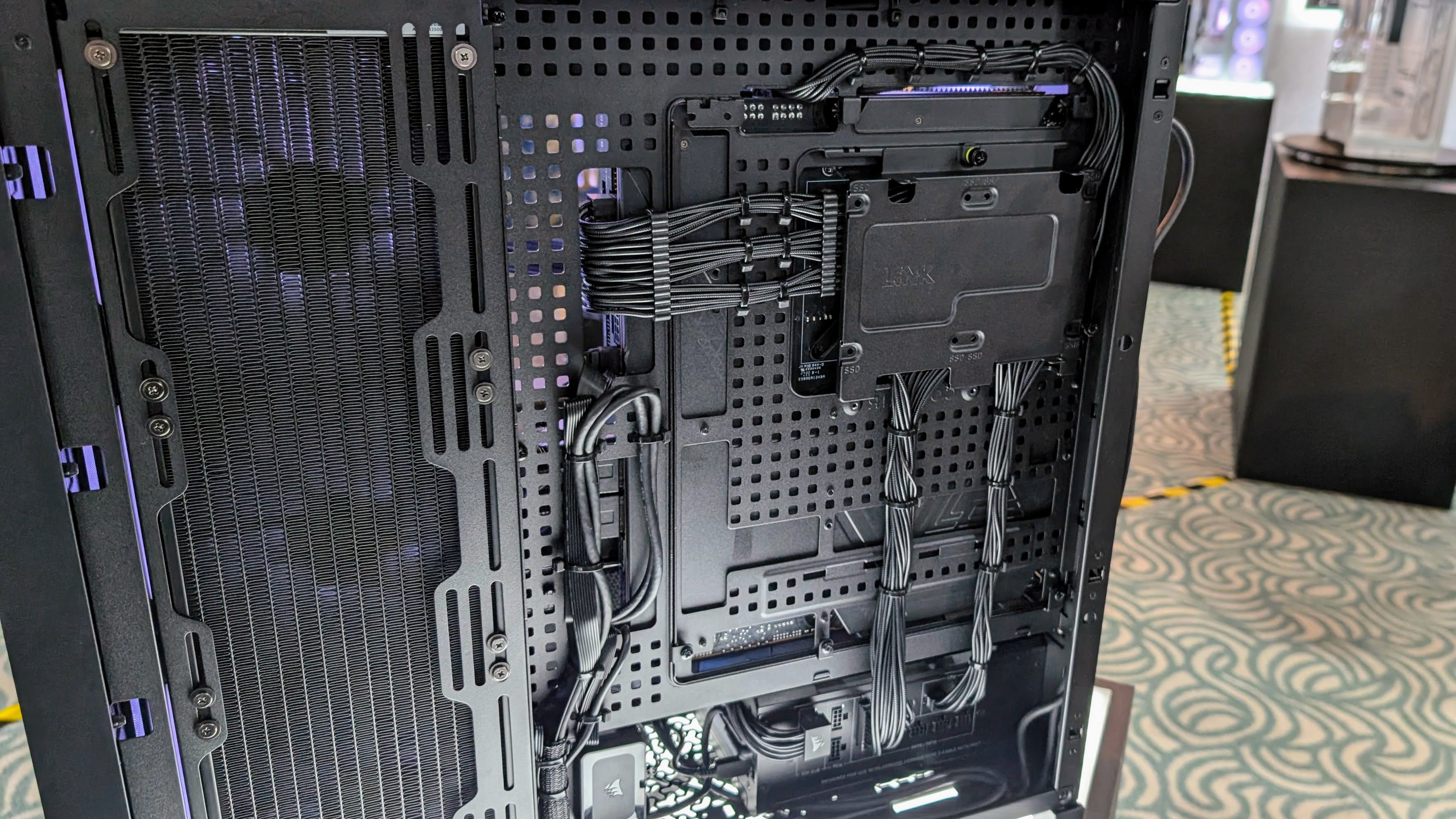
The HXi models go all the way up to 1500W and support iCUE Link, letting you monitor power draw and temps in real time, right alongside your fans, AIOs and lighting. In other words, perfect for higher end builds.
In contrast, the RMx Shift lineup leans more into everyday practicality, with a focus on low noise, high efficiency and clean cable management. Both ranges come with native 12V-2x6 support, so you’re already covered for those next-gen GPUs you keep pretending you’re not saving up for.
Peripherals made for customisation
Corsair’s new peripherals followed the same focus: customisation is king. The new MAKR 75 is a barebones mechanical keyboard kit with a 75% layout, gasket mounting, and 8000 Hz polling – aka a playground for keeb builders. It’s hot-swappable, of course, and comes with support for QMK and VIA, so whether you’re deep into remapping every key or just want to try a new switch feel, it can make it happen.
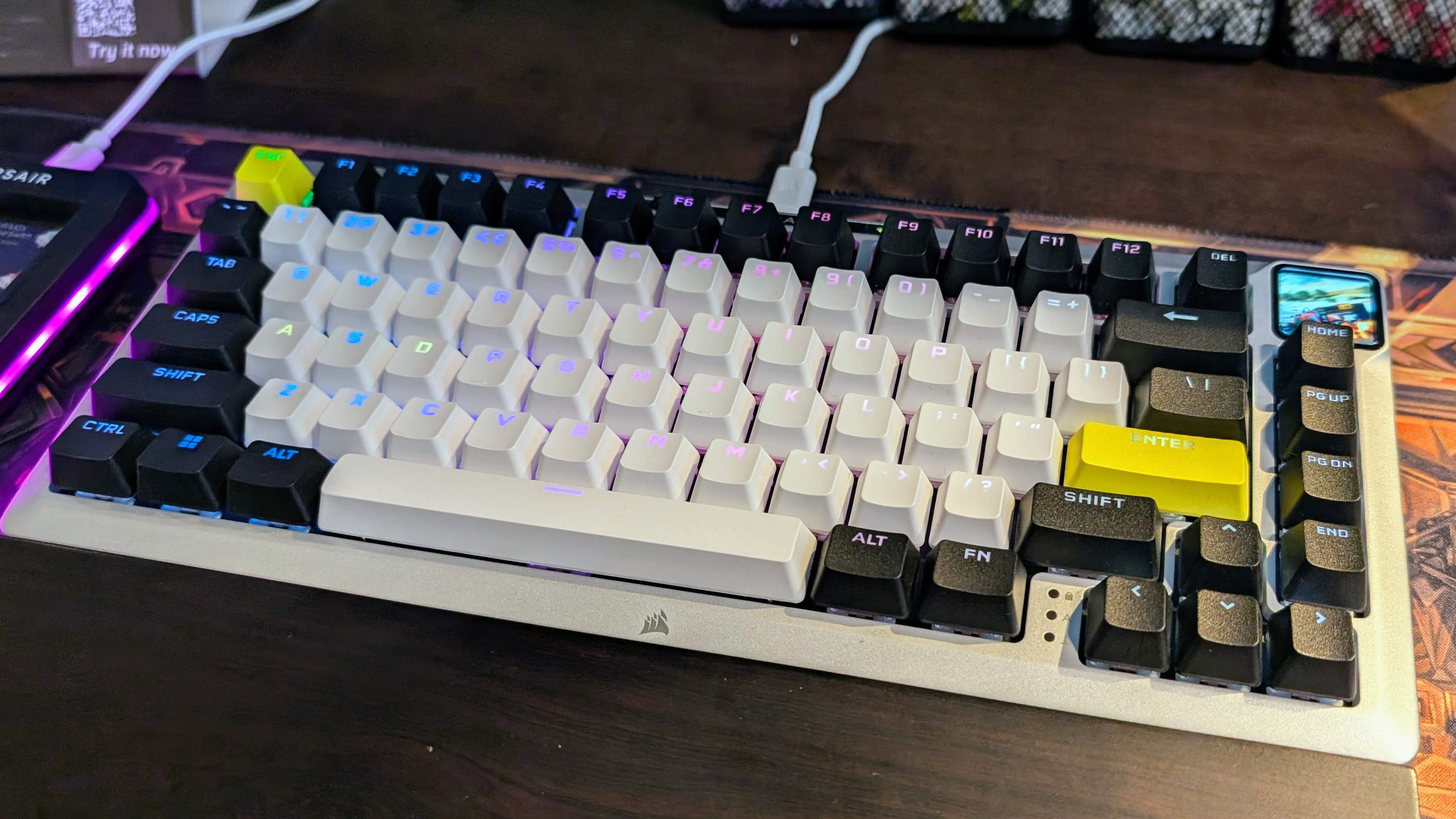


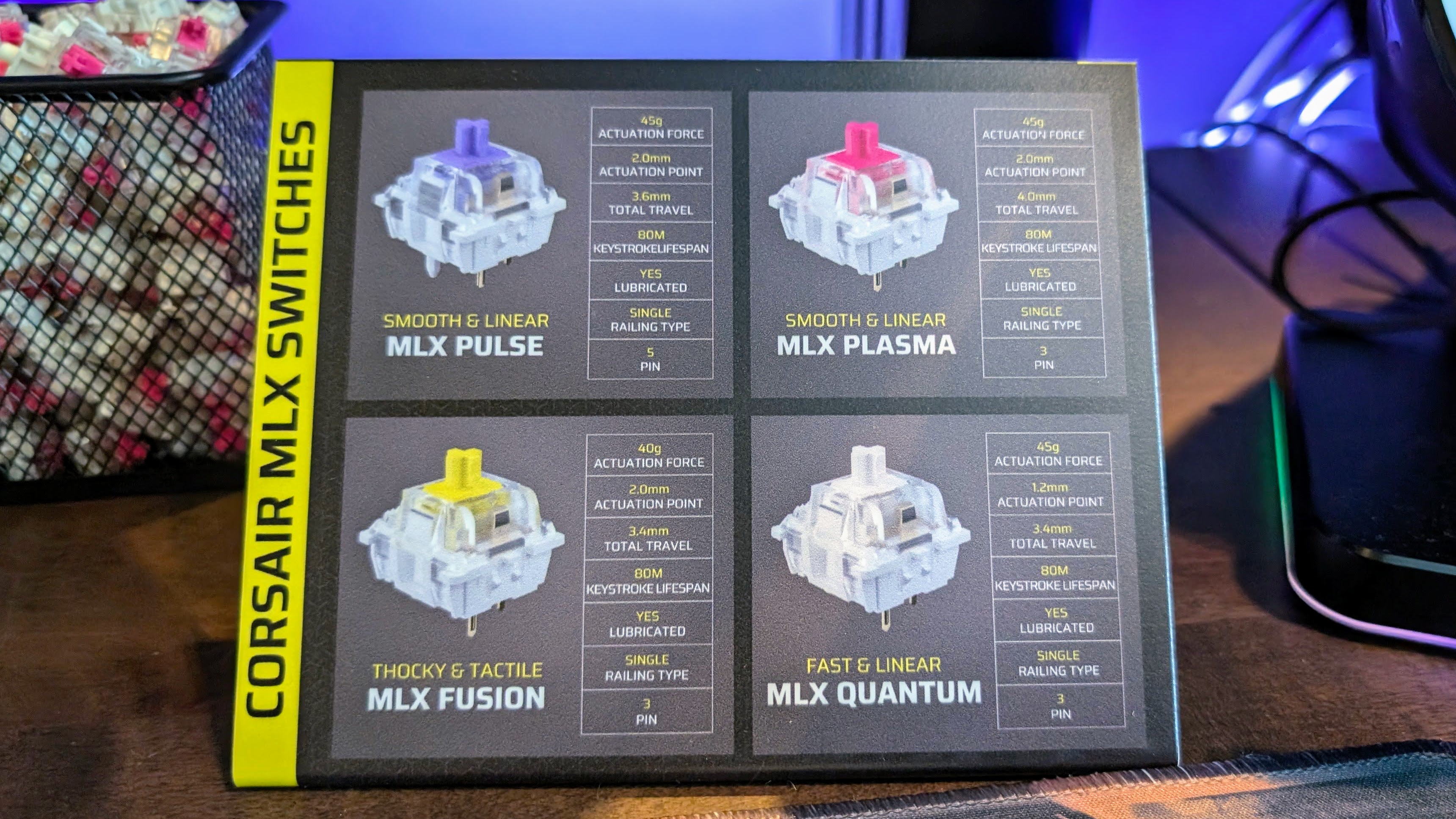
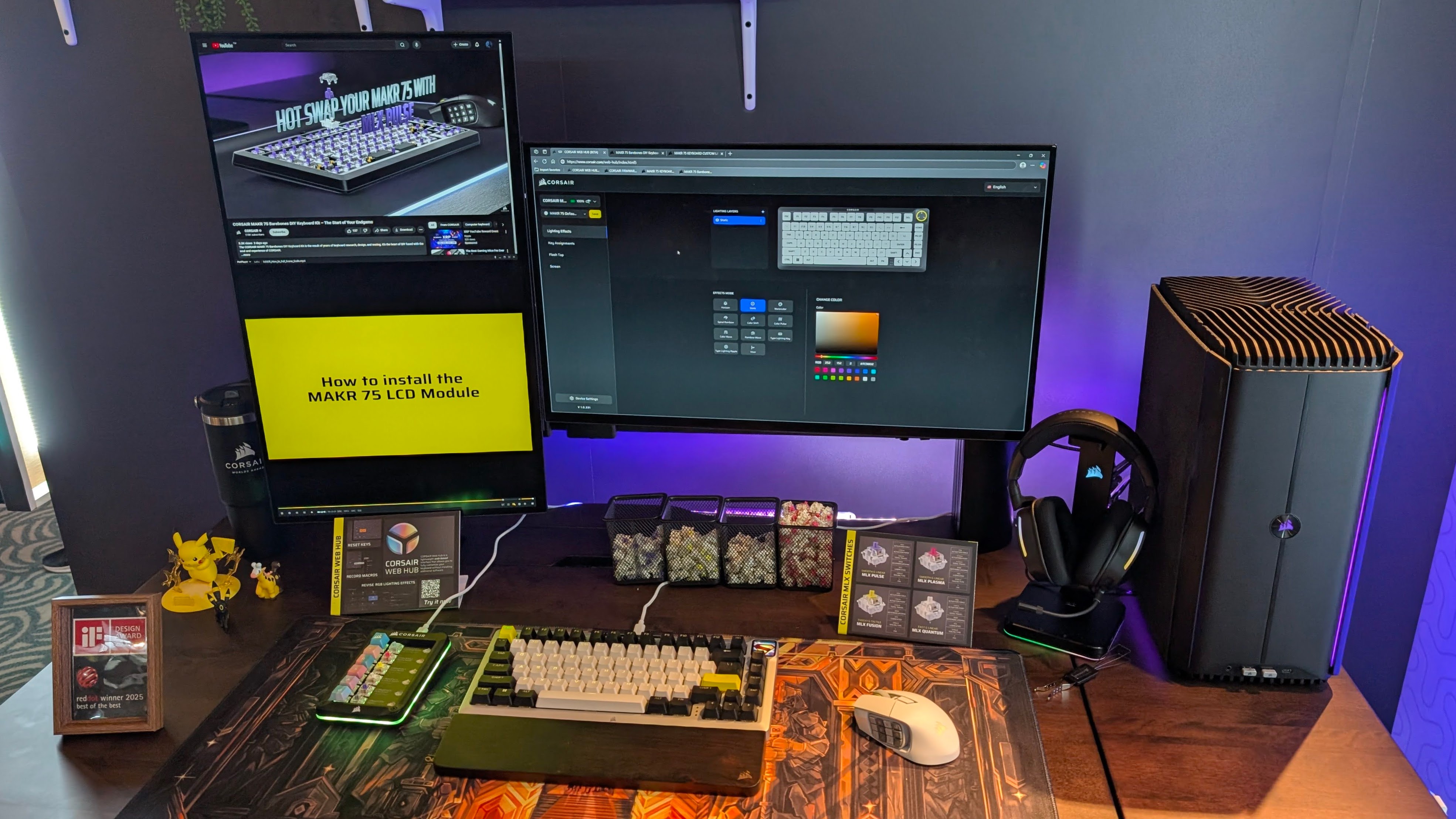
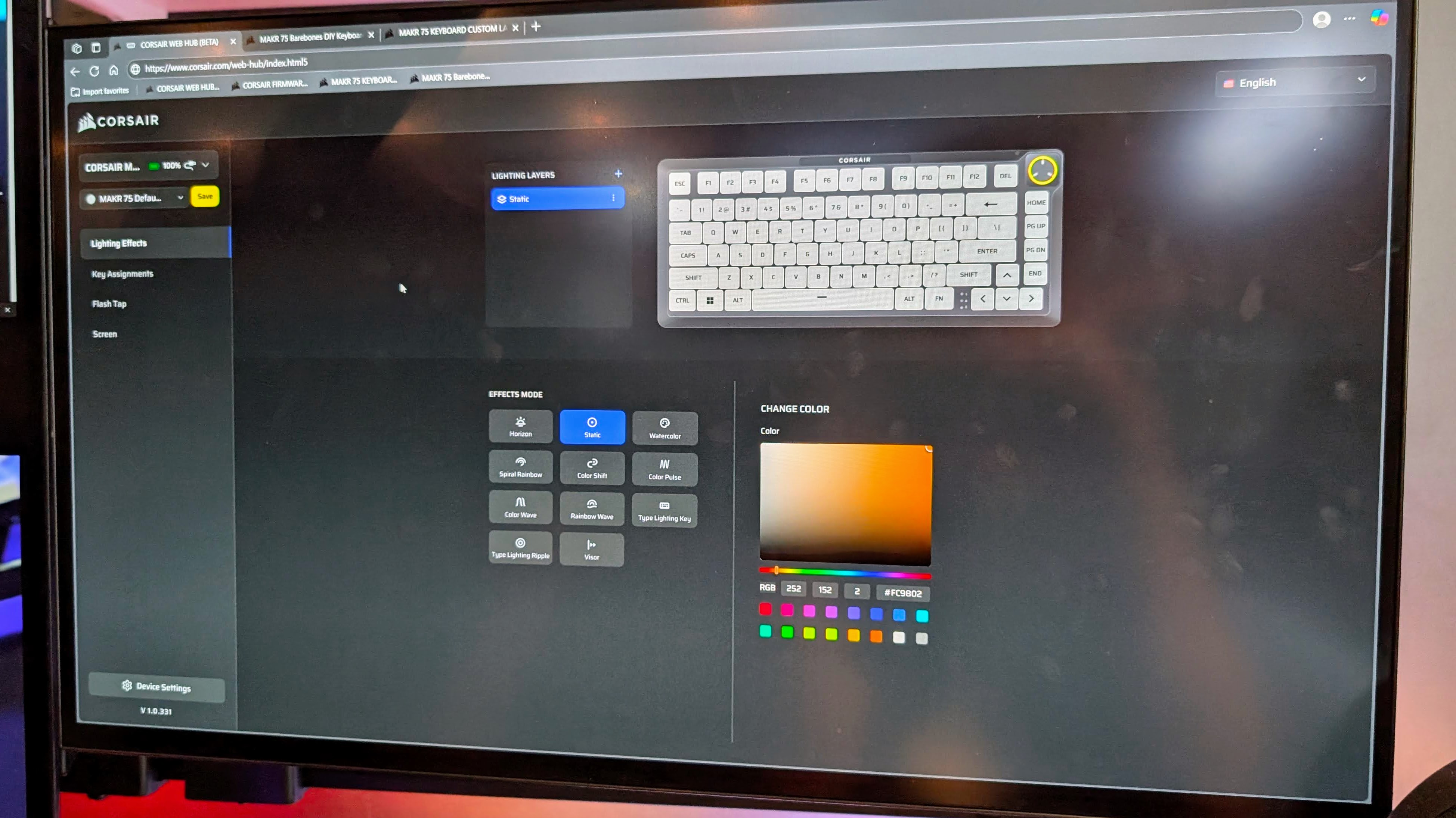
In hand, the keyboard has a very premium heft to it, and a clean, minimalist design that doesn’t feel off-the-shelf. We get the feeling that Corsair will win over both keyboard nerds and curious first-timers alike with the MAKR 75.
Meanwhile, the Scimitar Elite Wireless SE mouse caters to MMO fans (or maybe those who love Excel macros) with 16 programmable buttons and Stream Deck software integration. It’s built for power users who live and die by their key binds, and we were impressed with how natural the button layout felt – even in big hands.
Add in wireless connectivity, onboard storage, and the ability to tie functions to specific apps or games, and you get a mouse that we think will be a hit with gamers, not to mention anyone looking to take their workflow to the next level.
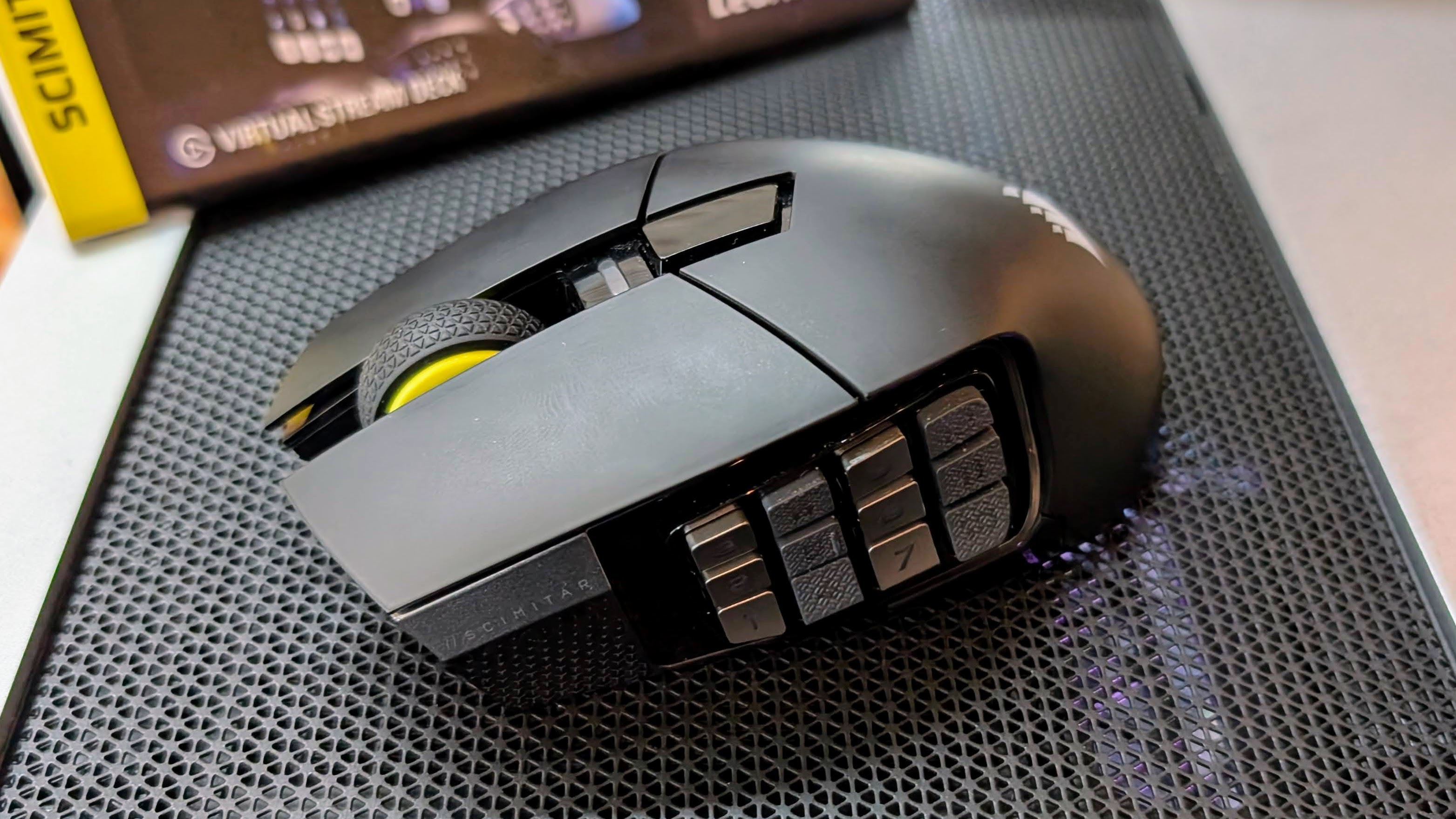
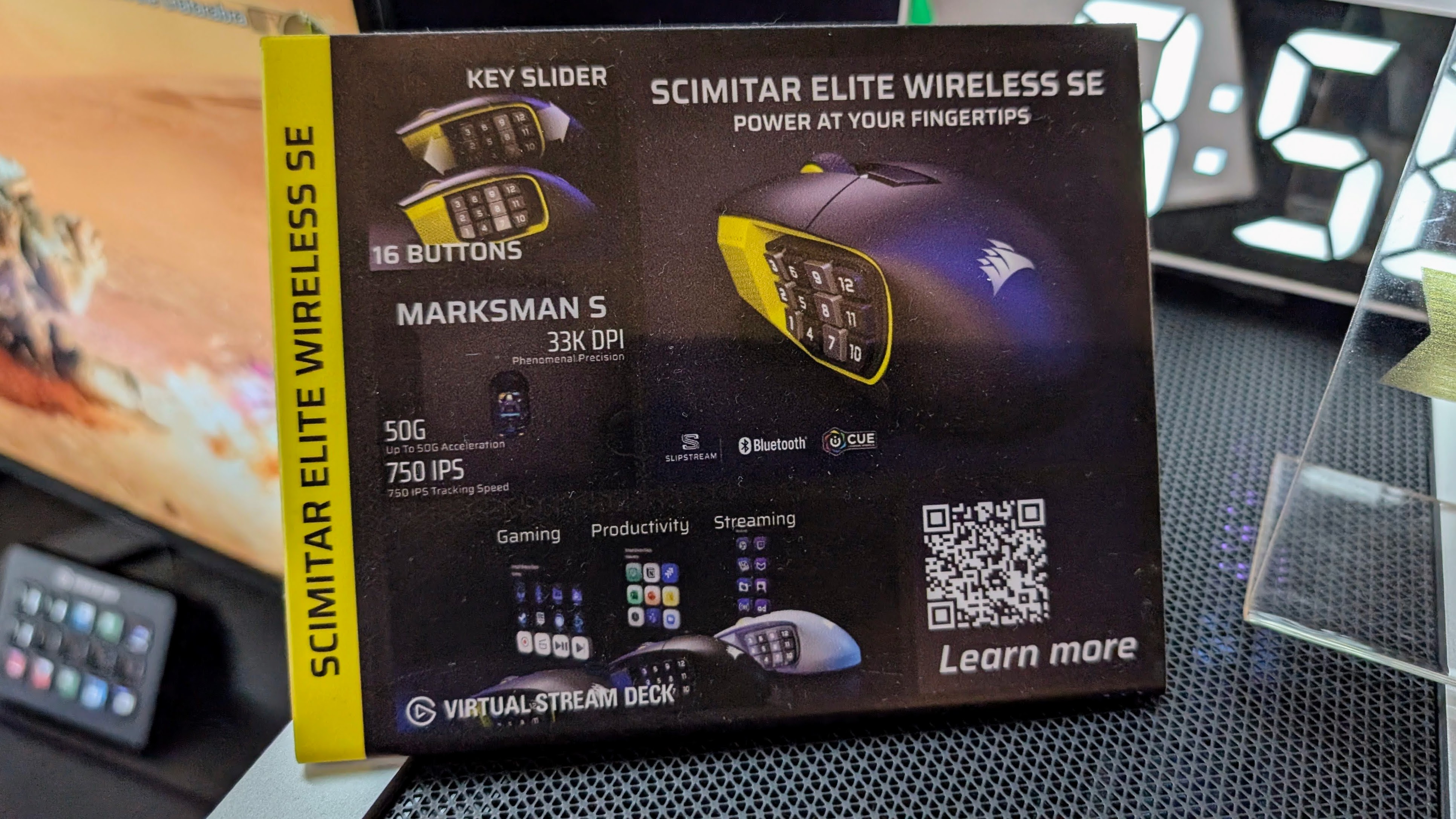
Corsair-owned Elgato also introduced some slick new Stream Deck options. There’s a scissor-switch model for faster tactile input, a software-only Virtual Deck for lightweight setups, and a full range of modular USB-C units in 6, 15, or 32-key layouts.
Corsair also noticed modders pulling Stream Decks apart and building them into custom setups, so developed a barebones version that is a fantastic nod to the DIY crowd, and no doubt will be very popular. Just to flex a little, they even built an entire wall display out of the modular units – a fun tribute to everything that is possible with the Stream Deck.
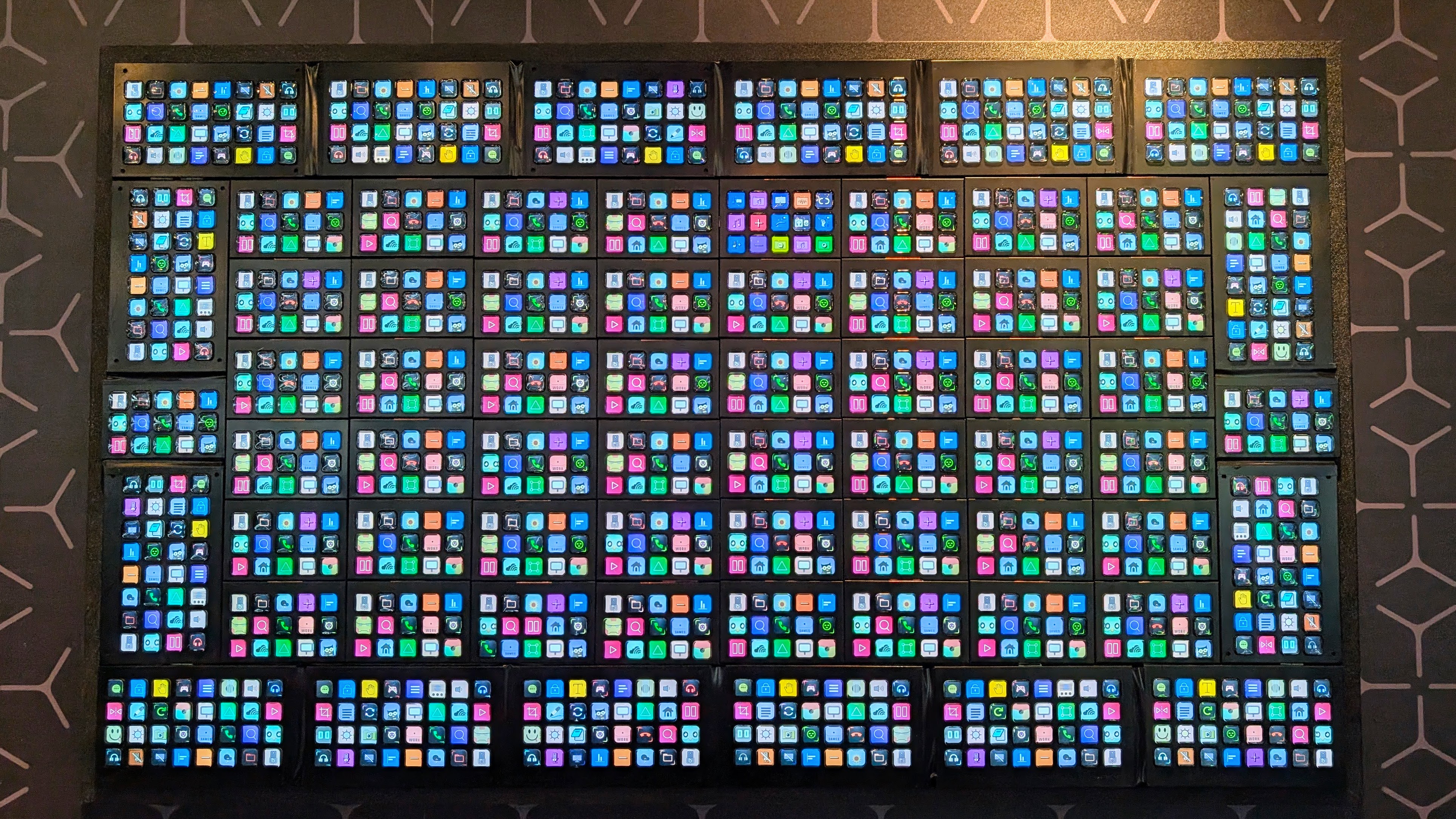
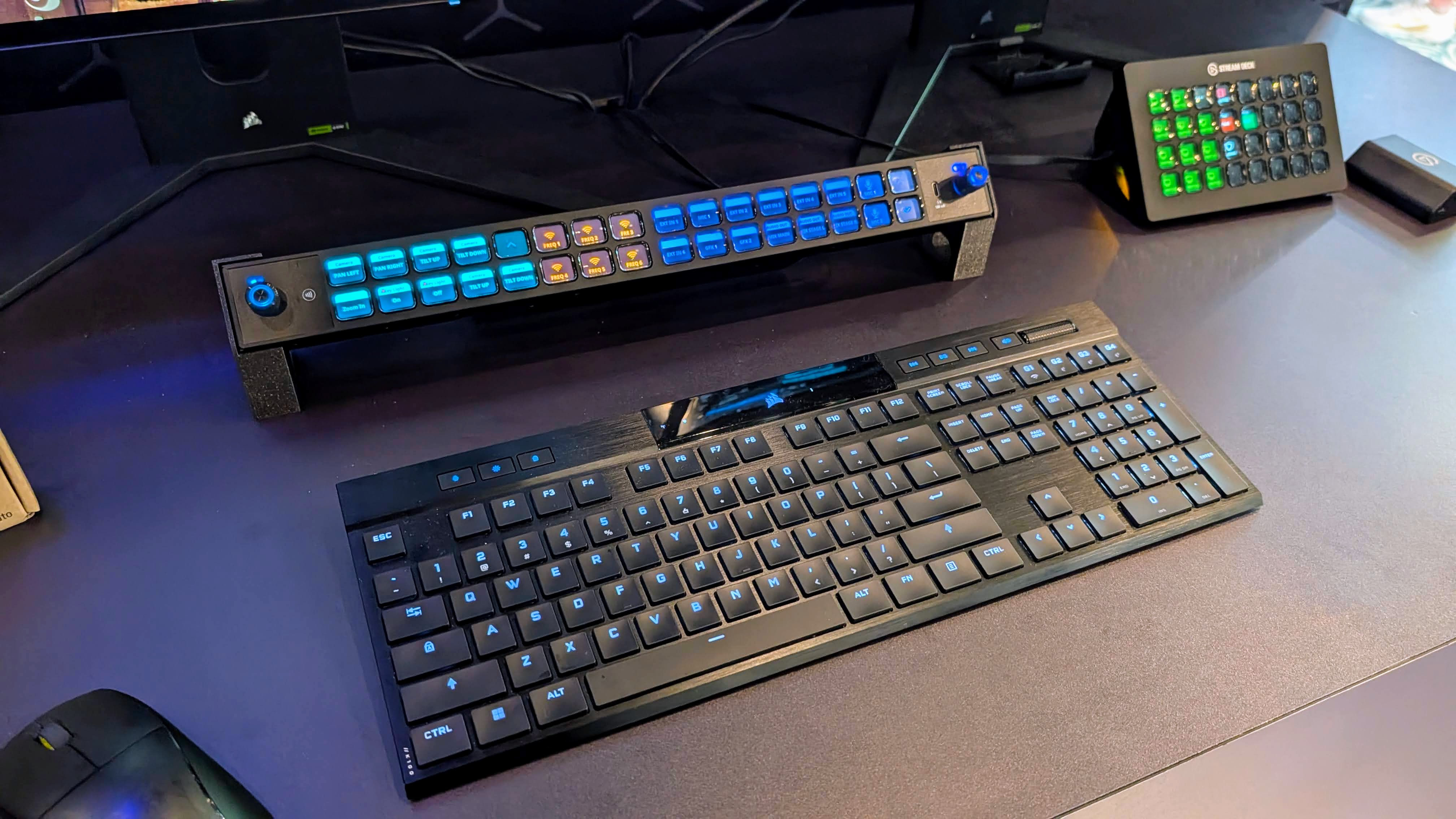

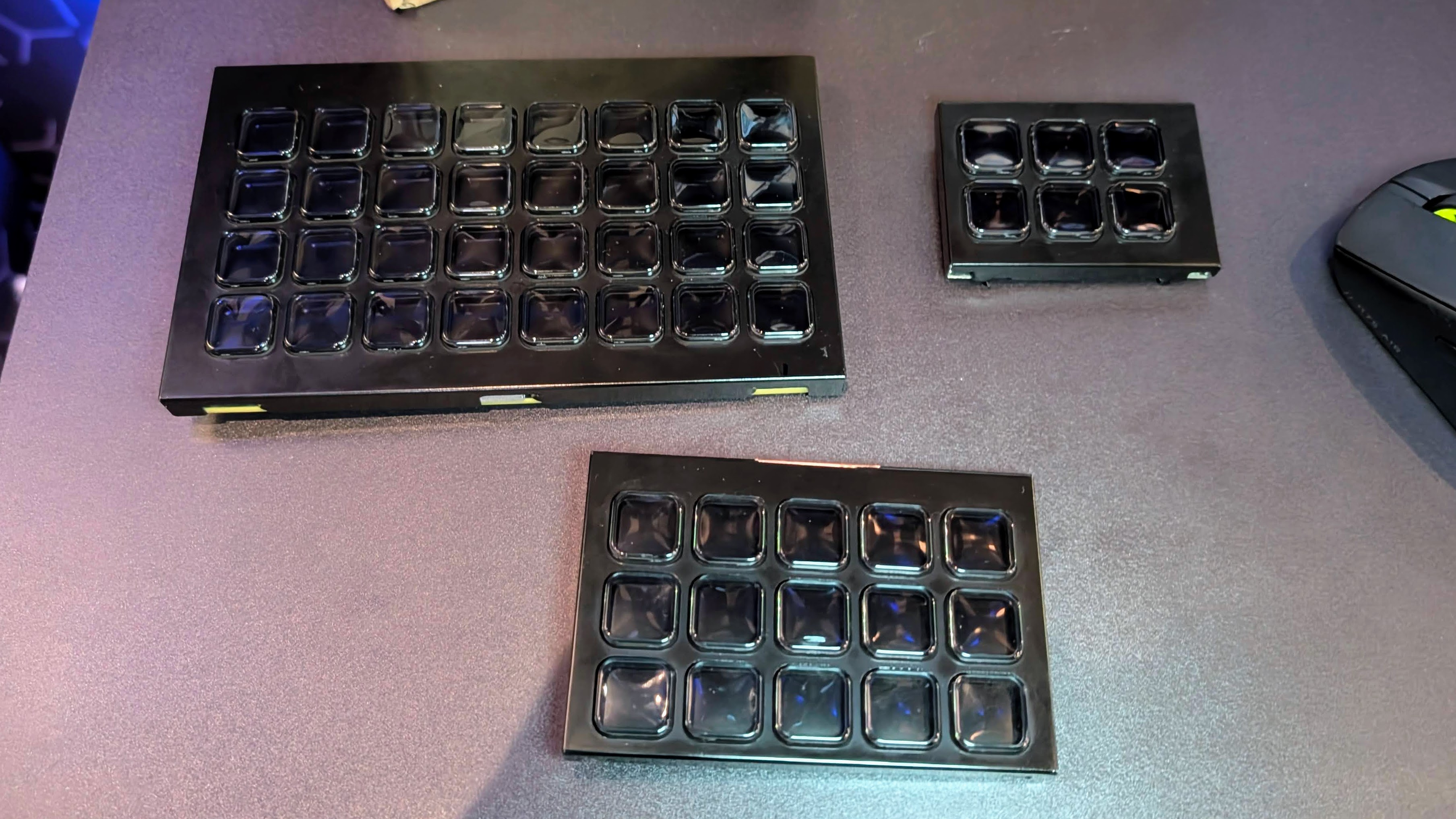
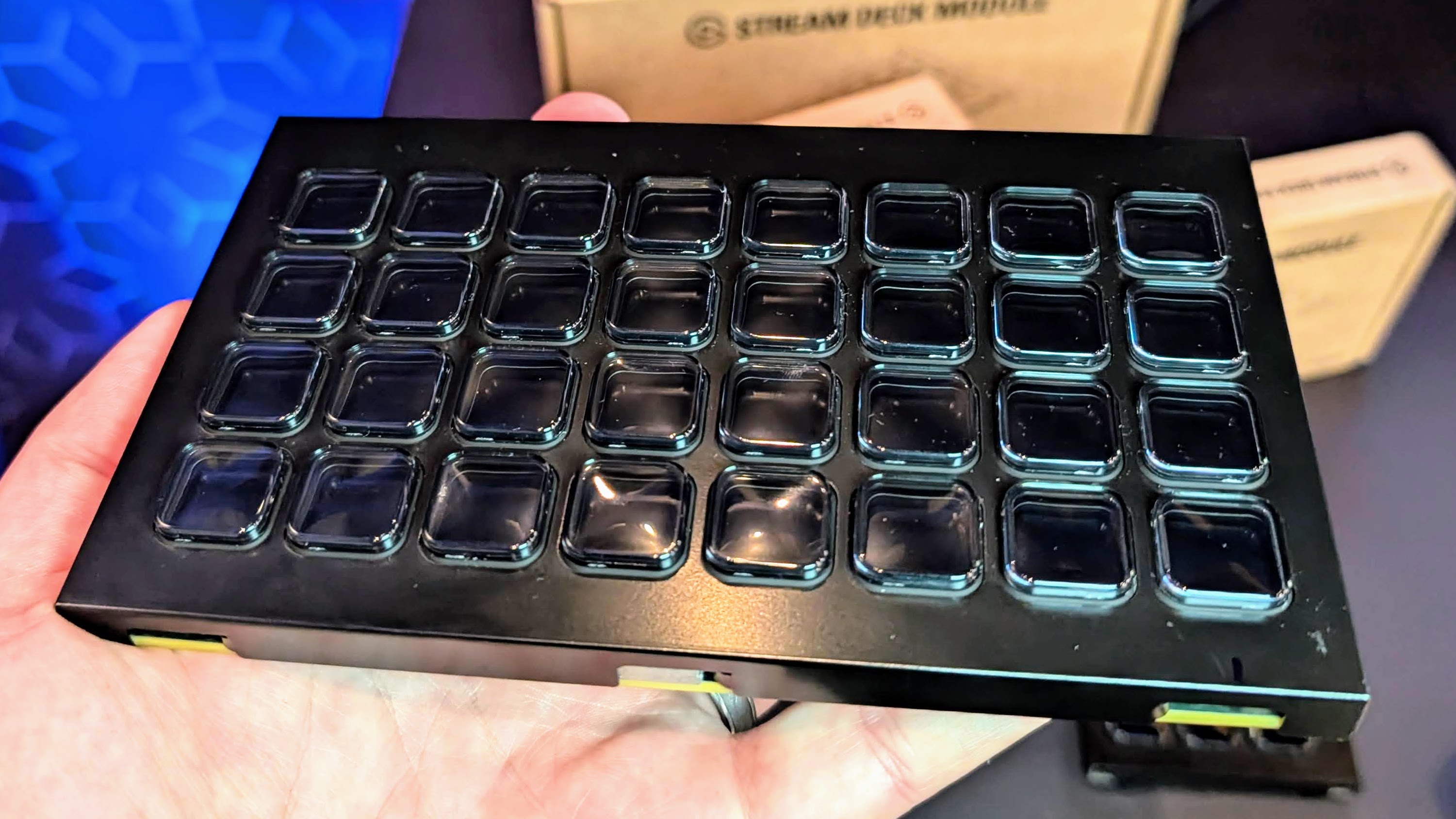
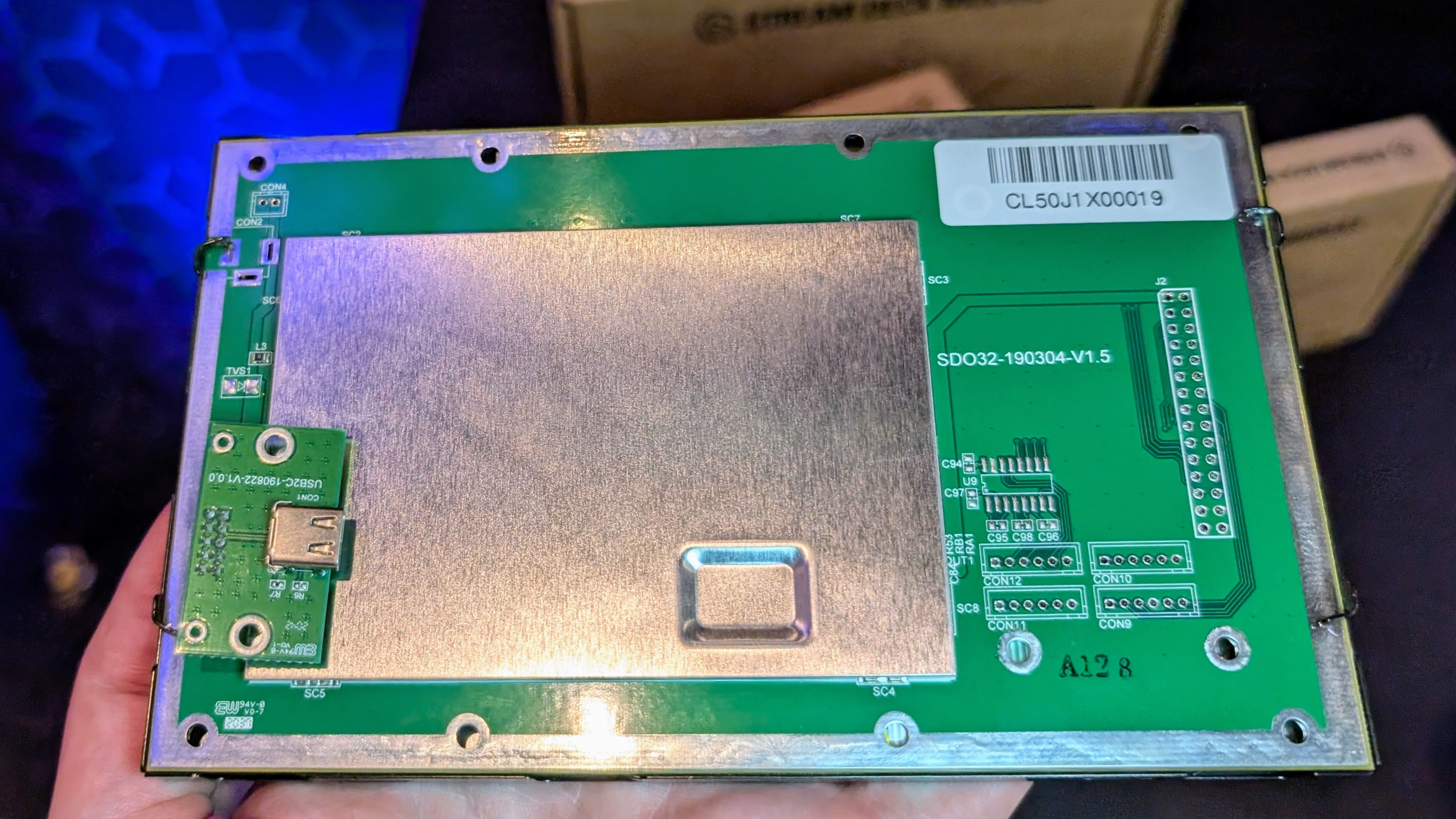
Want to know more about what Corsair launched and demoed at Computex 2025? Take a look at the Corsair event page.
TechRadar Australia flew to Computex 2025 courtesy of MSI Components, Corsair and Synology.

Lindsay is an Australian tech journalist who loves nothing more than rigorous product testing and benchmarking. He is especially passionate about portable computing, doing deep dives into the USB-C specification or getting hands on with energy storage, from power banks to off grid systems. In his spare time Lindsay is usually found tinkering with an endless array of projects or exploring the many waterways around Sydney.
You must confirm your public display name before commenting
Please logout and then login again, you will then be prompted to enter your display name.